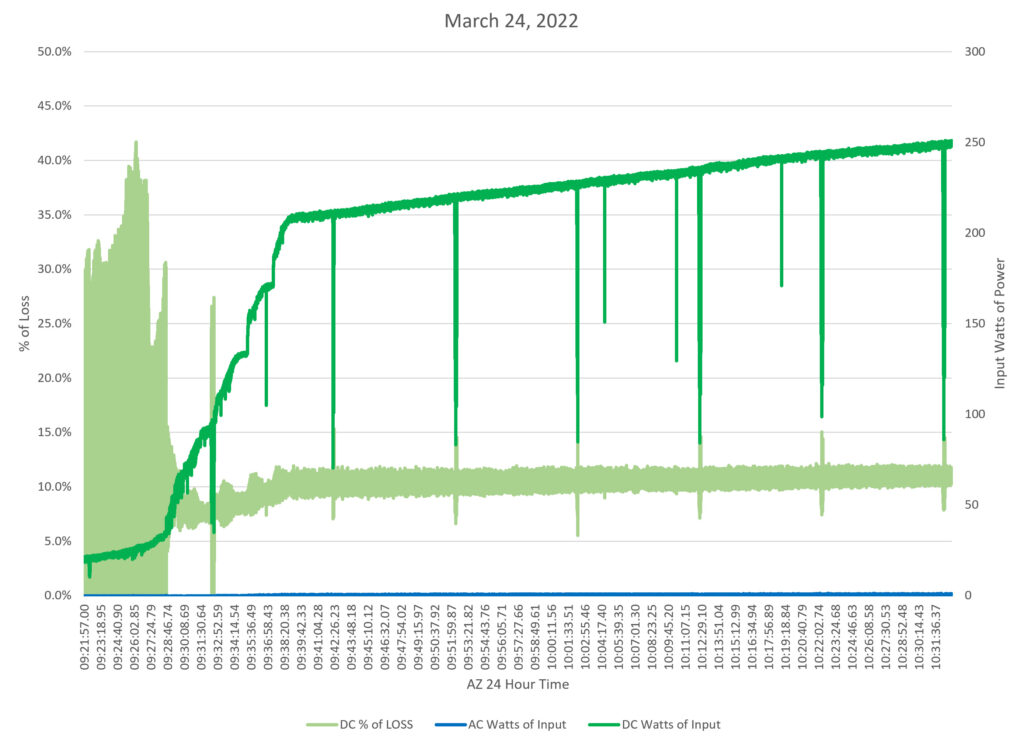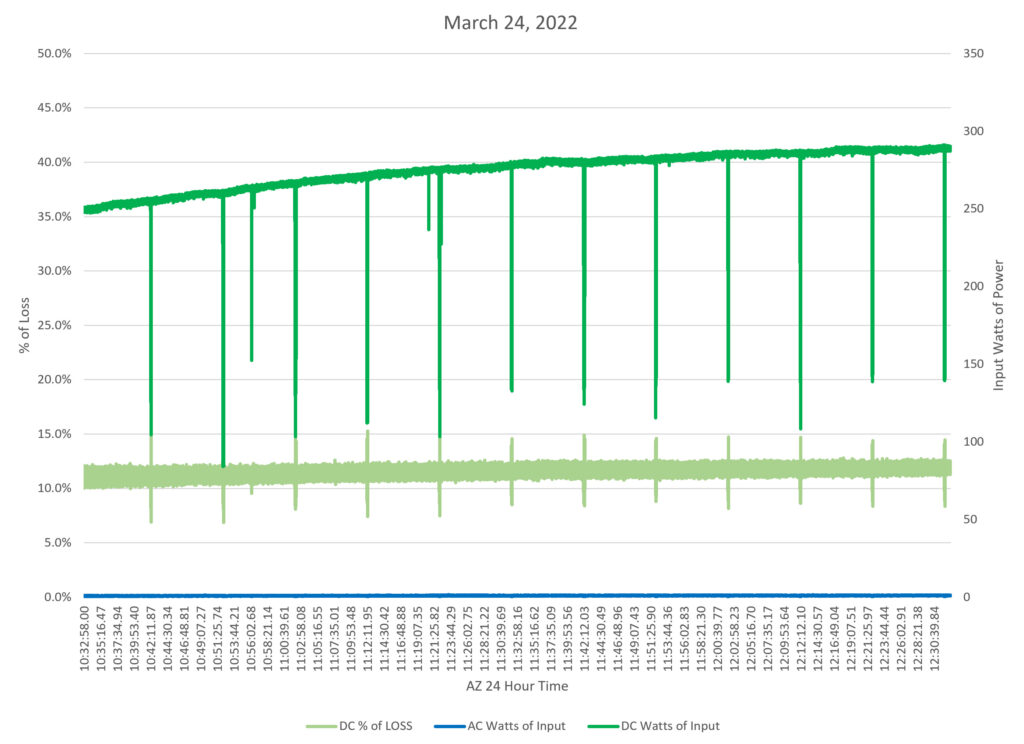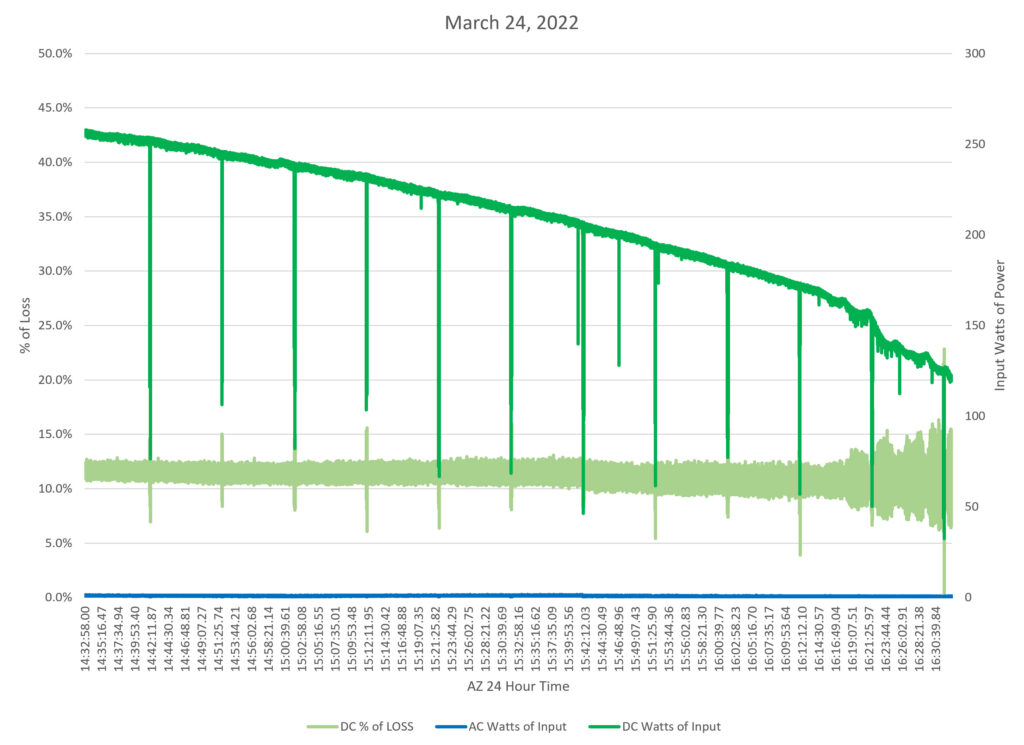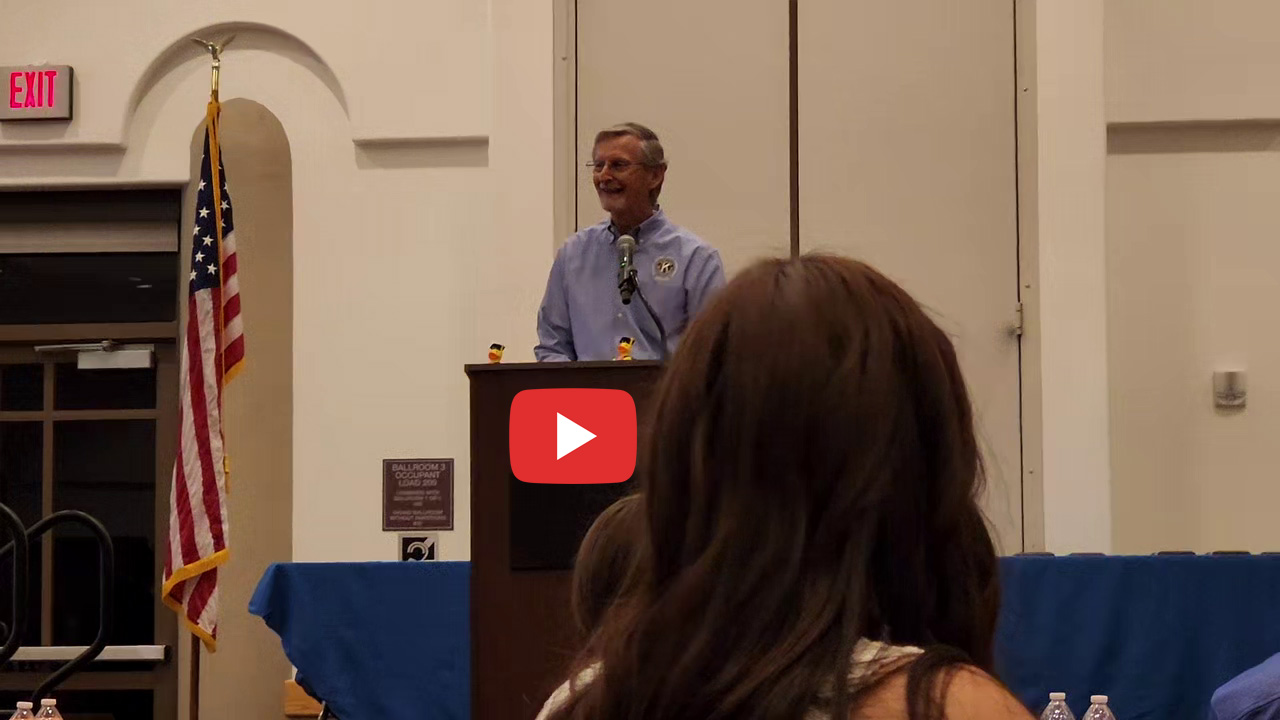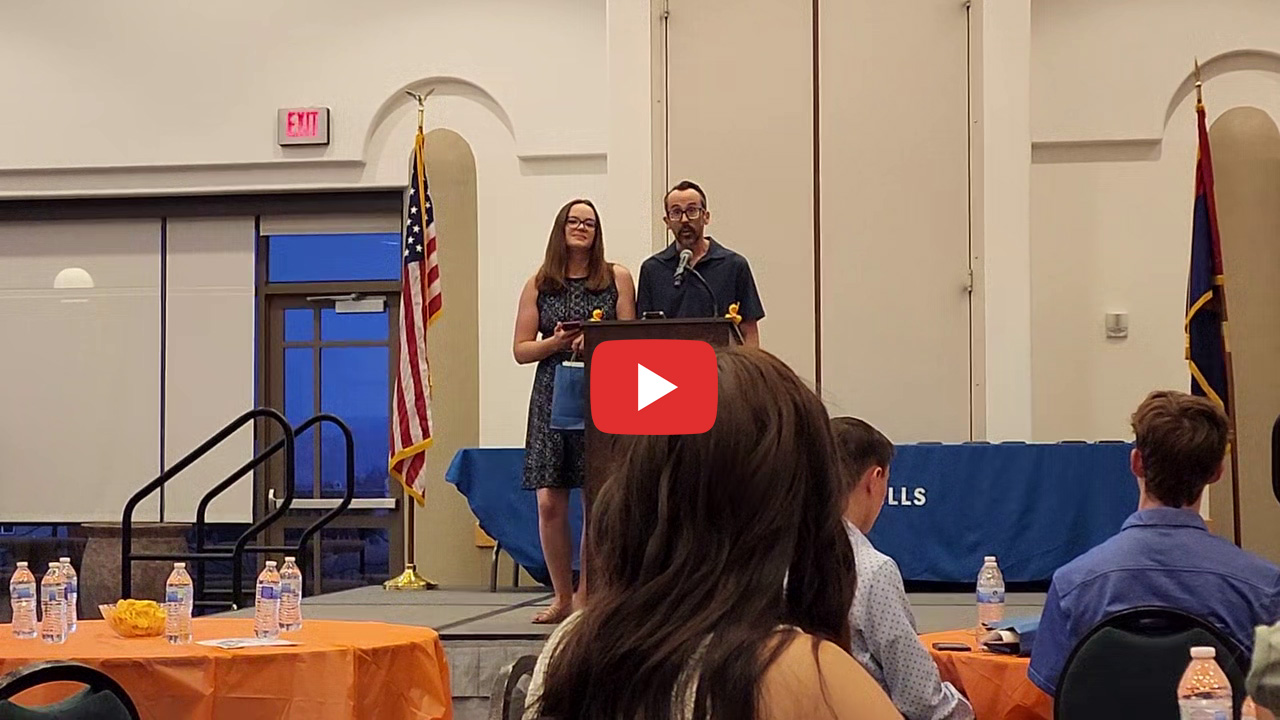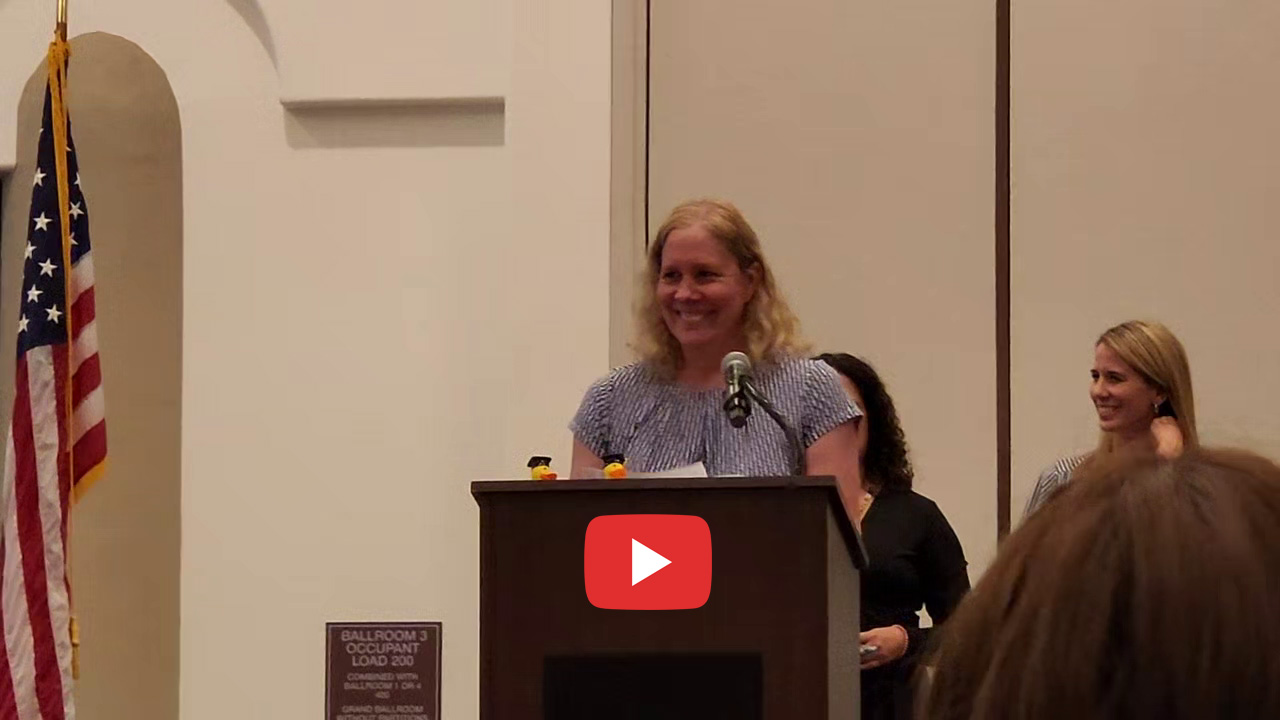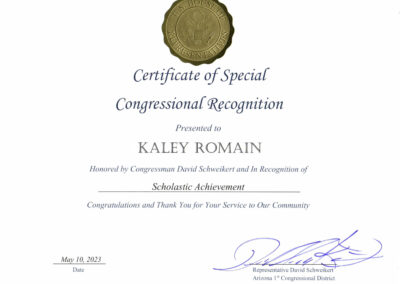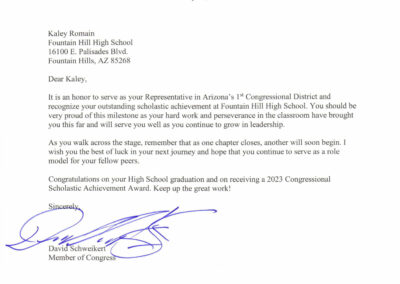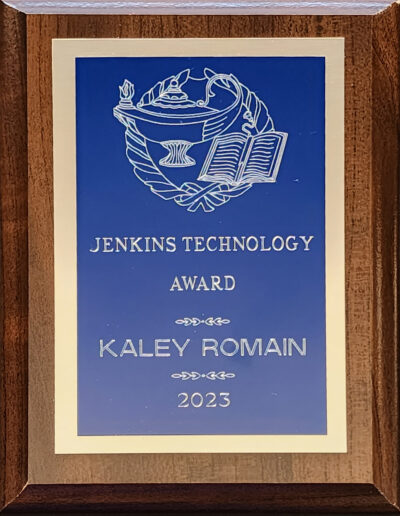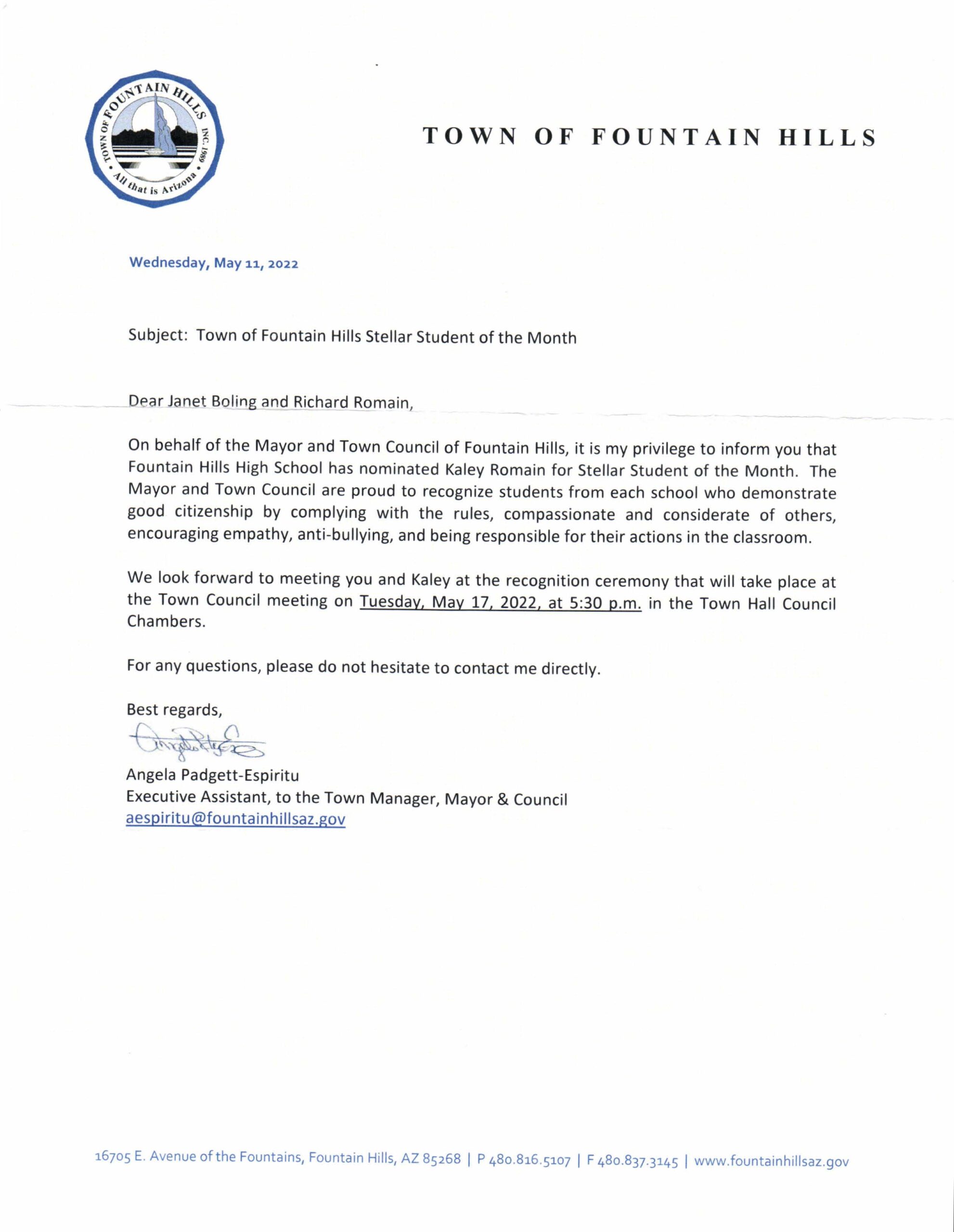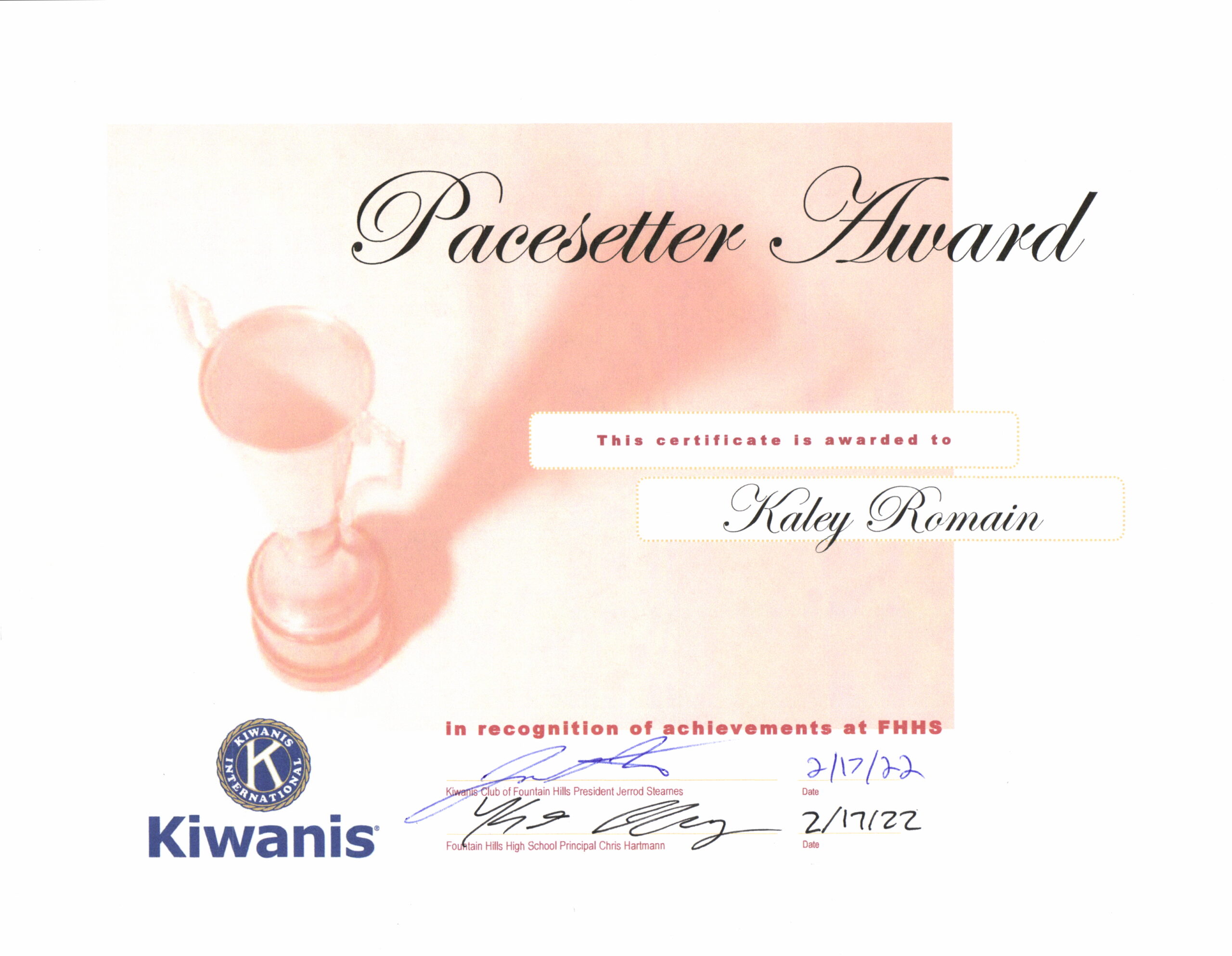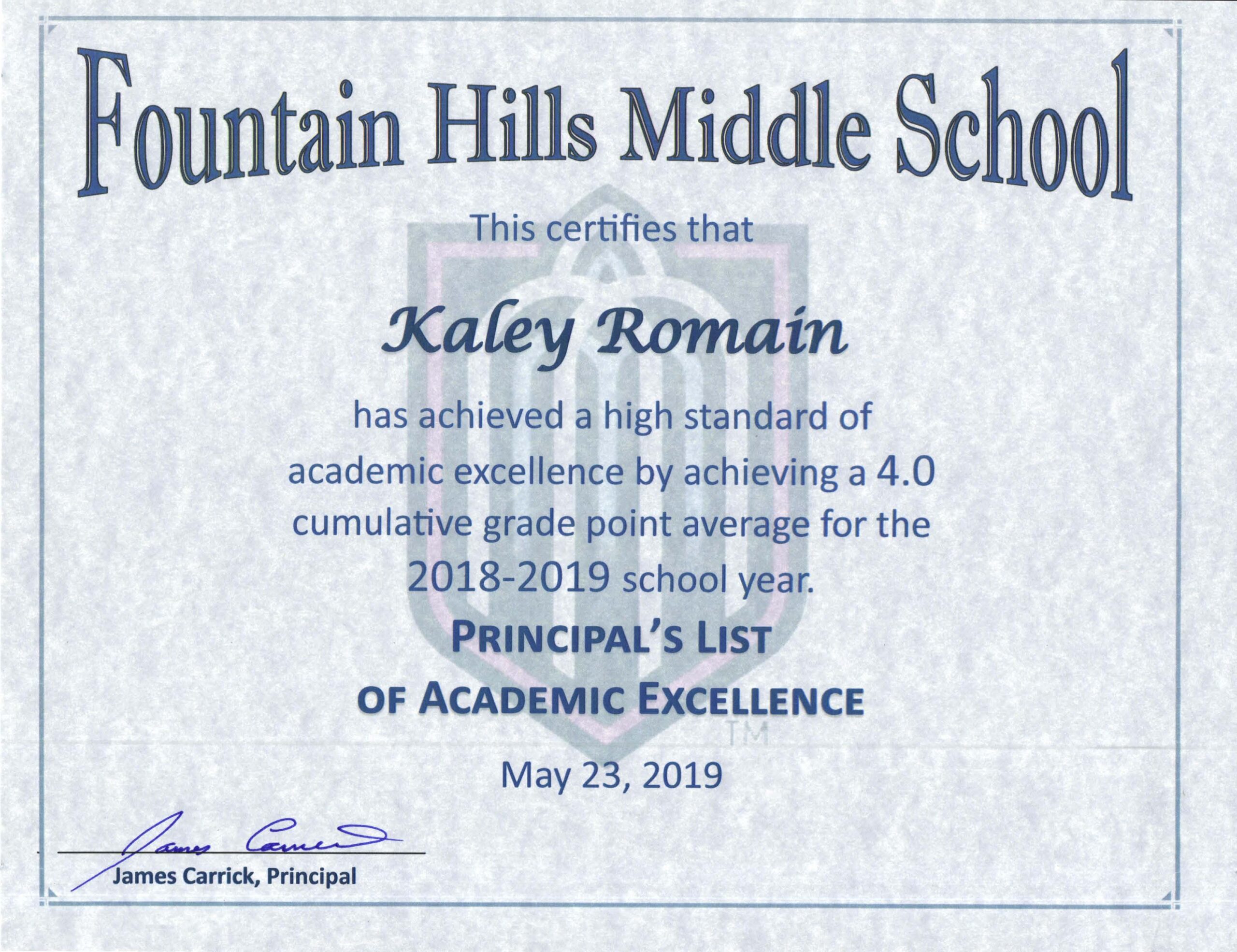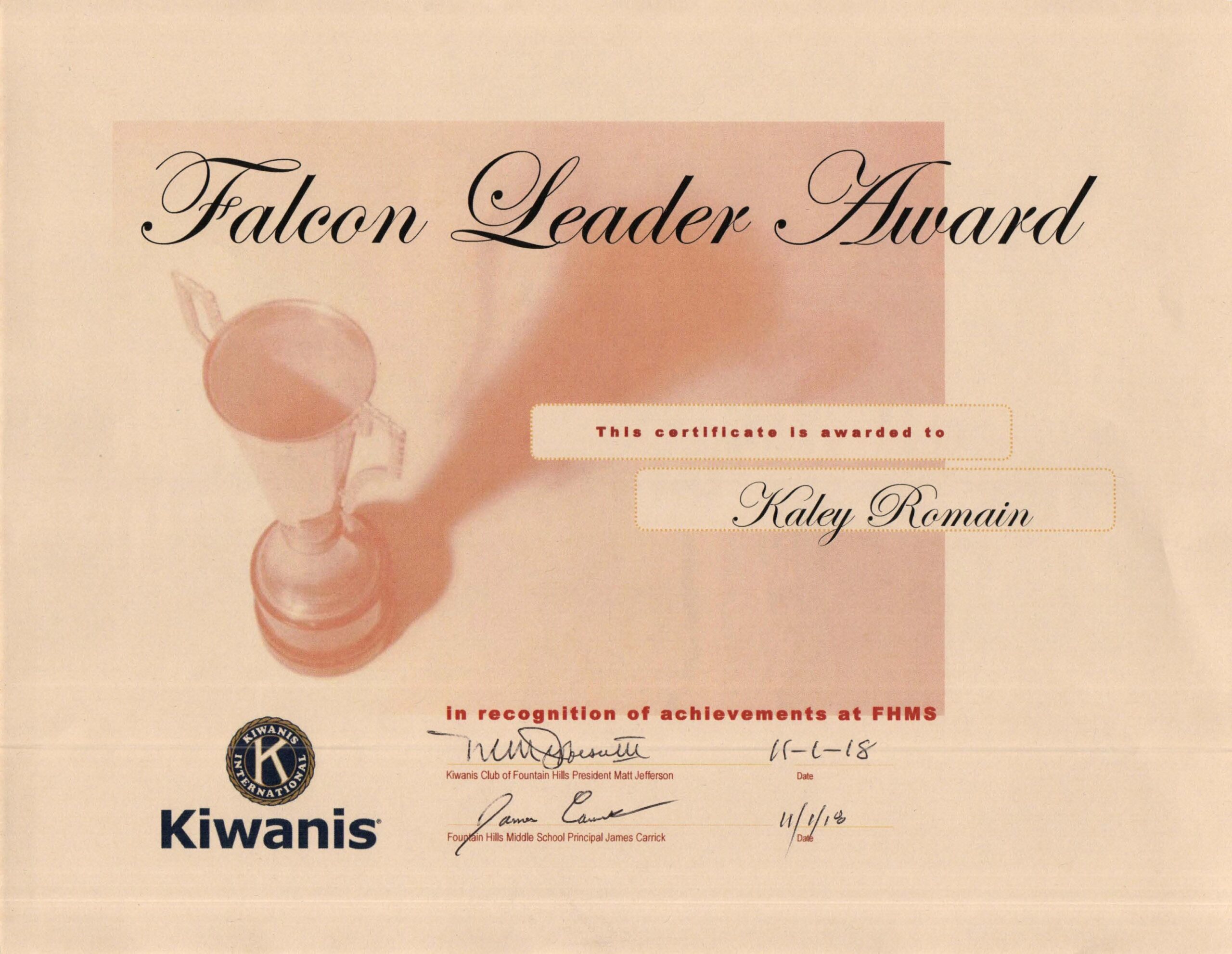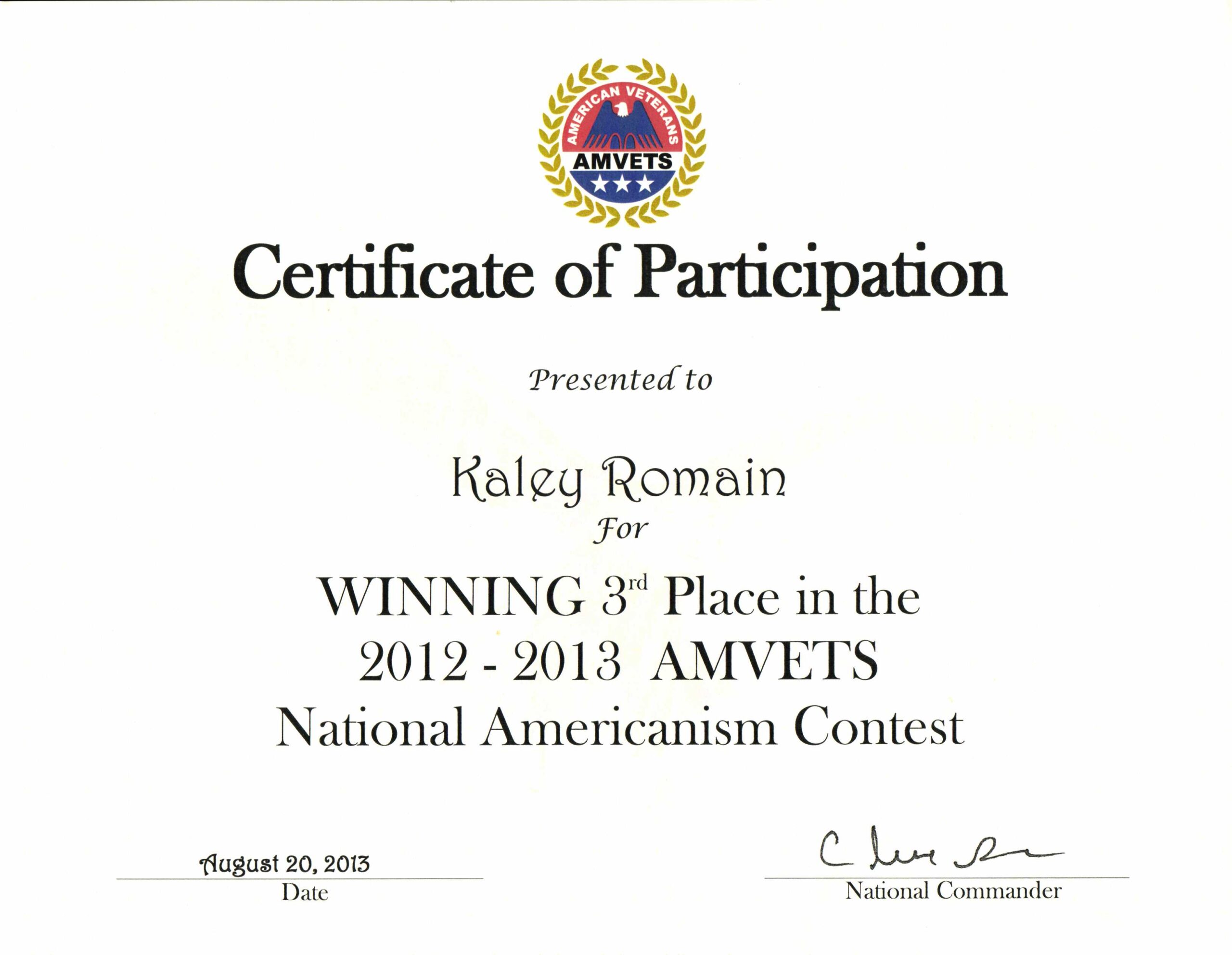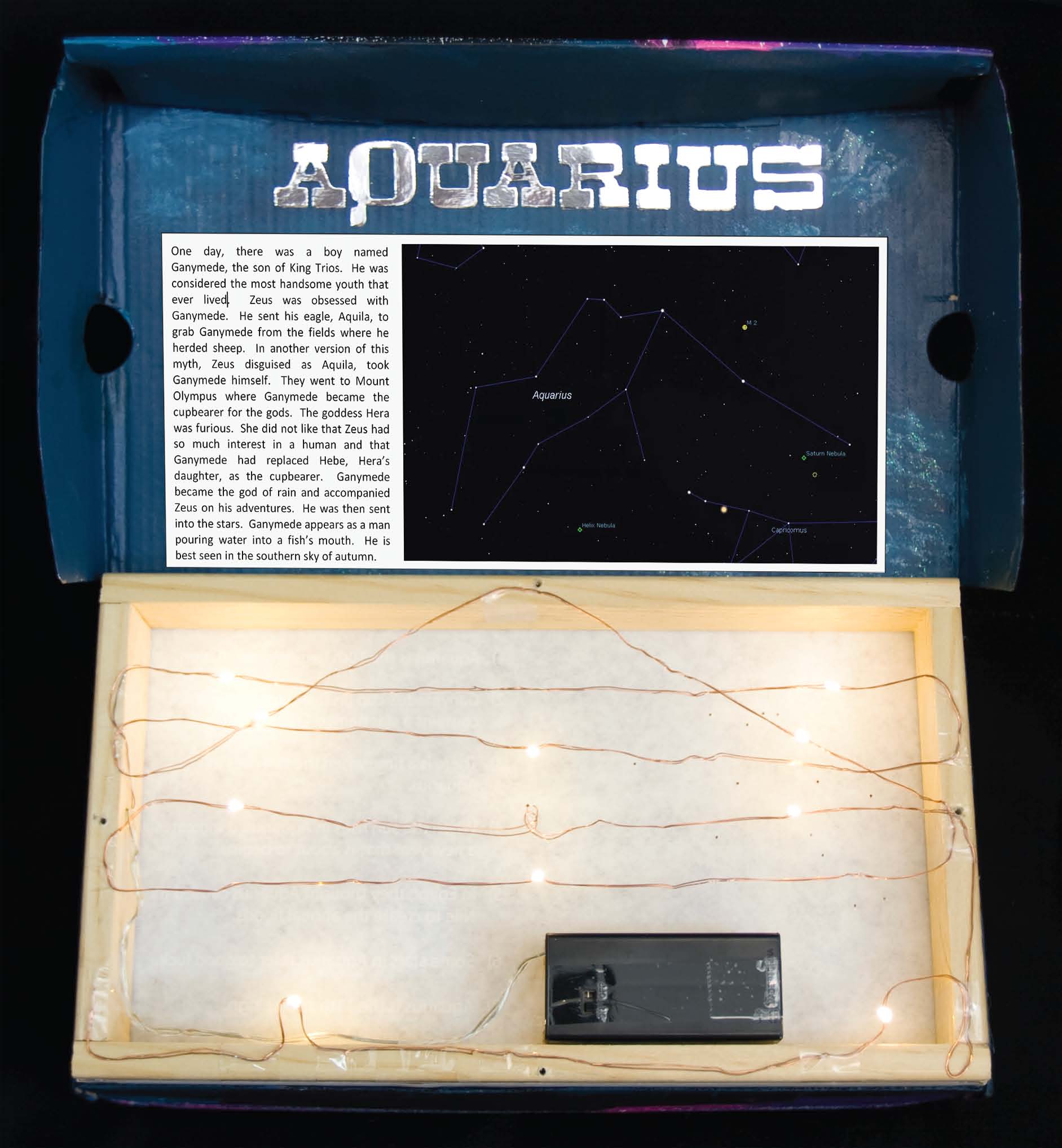Fountain Hills High School AP Capstone Research, Fountain Hills, AZ
I. INTRODUCTION
EV/PV ORIGINS
In the United States, the first electric car, an 1890 six passenger electrified wagon with a top speed of 14 miles per hour, sparked an interest in electric vehicles. That interest led to electric cars representing ⅓ of all vehicles on the road by 1900 with continued strong sales over the next 10 years. With the enthusiasm experienced over 100 years ago, one would anticipate an overwhelming presence of electric vehicles (EVs) in modern society. To the contrary, electric vehicle presence in the market has declined to virtual obscurity.
In the United States, the first electric car, an 1890 six passenger electrified wagon with a top speed of 14 miles per hour, sparked an interest in electric vehicles. That interest led to electric cars representing ⅓ of all vehicles on the road by 1900 with continued strong sales over the next 10 years. With the enthusiasm experienced over 100 years ago, one would anticipate an overwhelming presence of electric vehicles (EVs) in modern society. To the contrary, electric vehicle presence in the market has declined to virtual obscurity.
One contributor to this decline is consumer sentiment about EVs, “...the average consumer, according to surveys, would not even consider purchasing an electric vehicle, demonstrating that the technology is not yet at that tipping point where it's on a certain path towards market dominance.” This is just one example highlighting why alternative energy use remains insignificant in the U.S. regardless of the benefits, incentives and social prestige promised by its advocates. As an extension to one of the primary goals of an EV, charging its batteries with clean renewable energy, solar generated electricity shares the same fate.
While solar energy use in its thermal form focusing sunlight to accumulate heat energy in targeted transfer medium(s) dates back as early as the 7th century B.C., the electrical form utilizing the photovoltaic (PV) effect used by today’s solar panels was not discovered until 1839 with its first effective deployment over 100 years later in 1954 where PV cells where deployed to power U.S. space satellites. Enjoying increases of 25% and 32% year-over-year for 2019 and 2020 respectively, as of 2020, the U.S. Energy Information Administration estimates that 130 billion kilowatt-hours (electrical measure of power generation) was produced by PV generation plants ranging from small residential systems to large utility-scale facilities. As impressive as this metric seems to be, it only represents a contribution of 0.46% of the U.S. electricity generation for the same year. Obviously, PV has a long way to go before it will have any significant impact on the aforementioned concerns. This research seeks to identify targeted opportunities to improve outcomes in these areas as it relates to solar-generated electricity.
EV/PV HISTORICAL AND CURRENT PROPAGATION
To explain the limited propagation of these functionally and objectively related technologies, EV (representing power consumption) and PV (representing power generation) with batteries (representing power storage) being the factor that connects them, we must evaluate their historical and current deployment paradigms while exploring the potential for new or alternate approaches that would create cumulative propagation improvements.
To explain the limited propagation of these functionally and objectively related technologies, EV (representing power consumption) and PV (representing power generation) with batteries (representing power storage) being the factor that connects them, we must evaluate their historical and current deployment paradigms while exploring the potential for new or alternate approaches that would create cumulative propagation improvements. Additionally, if said improvements were targeted for specific use cases in such a manner as to dramatically improve acceptance by their prospective demographic, EV and PV propagation should follow a similar trajectory. Furthermore, prioritizing those opportunities that scale efficiently will both provide a model to be duplicated as well as facilitate a positive feedback loop of improving economic performance which in turn drives user enthusiasm even higher. Finally, leveraging these new or alternate deployments in a manner that improves or mitigates cost, access, convenience, performance, and other concerns of their markets, EV and PV deployments would likely show a quantum leap in proliferation.
EV and PV see significant support through federal, state and local incentive programs, which are substantially responsible for the exponential growth of the adoption of these respective technologies. Conversely, competing technologies are encountering a growing trend of disincentives ranging from increased cost of ownership, regulatory burdens, and outright banned use. Public exposure to the potential environmental impacts regarding the use of these energy alternatives is equally compelling. Production costs continue to decline, efficiency and purchase options continue to increase. According to the U.S. Energy Information Administration (EIA), as of the end of 2021, EVs enjoyed a 10% market share for light duty vehicle sales in the U.S. The International Energy Agency (IEA) in its “Global EV Outlook 2021” documented 10 million electric cars on the world’s roads in 2020 calling it a “pivotal year for the electrification of mass market transportation.” This represented about 4.6% of total cars sales worldwide. Worldwide, 14 billion USD was provided on direct purchase incentives and tax deduction for electric cars in 2020, a 25% rise year-on-year. Financial incentives in the U.S. originated in 2008 and have grown substantially through the present. PV has a comparable heritage. The International Renewable Energy Agency (IRENA) reported that 128 billion USD was provided to the renewable power generation sector to incentivize its propagation worldwide in 2017. According to the Center for Sustainable Systems of the University of Michigan, in 2011 the U.S. Department of Energy (DOE) launched the SunShot Initiative with the intent to reduce the cost of solar energy by 75% making it competitive with other energy options. The 2020 target of $0.06 per kilowatt hour was reached three years early in 2017 and the 2030 goal is set at $0.03 per kilowatt hour.
AN ALTERNATIVE PARADIGM
In consideration of the exponential year-over-year growth, aggressive promotion, investment incentives, competitive energy disincentives and dire environmental messaging to date the question would be, regardless of the justification for their pursuits, is a 10% market share for EVs and a 0.46% market share for PV generation indicative of a policy that has or will achieve a compelling saturation of these technologies in the U.S.?
In consideration of the exponential year-over-year growth, aggressive promotion, investment incentives, competitive energy disincentives and dire environmental messaging to date the question would be, regardless of the justification for their pursuits, is a 10% market share for EVs and a 0.46% market share for PV generation indicative of a policy that has or will achieve a compelling saturation of these technologies in the U.S.? Even after labeling 2020 as a “pivotal year” for EVs, the IEA went on to state, “But the challenge remains enormous. Reaching a trajectory consistent with the IEA Sustainable Development Scenario will require putting 230 million EVs on the world’s roads by 2030.” The National Renewable Laboratory’s (NREL) concluded, “Developing sustainable markets for renewable energy technologies is a complex and challenging task. Advancement of these technologies faces informational, financial and institutional barriers.{...} Although the aggregate impacts of the incentives in the case-study states have been modest, it is important to note that some programs, particularly the relatively new buy-down programs, have played significant roles in increasing the number of grid-connected photovoltaics installed in their respective states.” Unquestionably, there is no shortage of opinions regarding these incentive, promotion, and market manipulation policies. As echoed by Felix Mormann, a Professor of Law at Texas A&M University School of Law, in his 2019 publication, “Clean Energy Equity” where he concludes, “Policymakers and scholars have historically assessed the performance of clean energy policies through an efficacy-oriented lens and, more recently, through an efficiency-oriented lens. This Article has made the case for adding equity as another first-order consideration in the design, implementation, and assessment of policies to promote the transition to a clean and decarbonized energy economy.” While the current efforts, metrics and status of EV and PV policy and markets could arguably be improved, the outcome to date suggests a paradigm shift in addition to the status quo considerations is likely needed.
Again, this pursuit is cumulative in that it would be considered in addition to, not in lieu of, existing policy, but involving a philosophical return to the origins of the technologies and what led to their original discoveries. According to the National Aeronautics and Space Administration (NASA), approximately 85% of all small satellites are equipped with solar panels and rechargeable batteries. This is predominantly due to the incapacity of competing energy sources being deployed and/or sustained on such craft. Subsequently, PV is inherently superior and frequently the only solution available. This “inherently superior” concept has always existed, but has been overlooked to a consequential degree by consumption habits and competing technologies that have been deeply rooted into every aspect of modern U.S. life. As the late 19th century battle of large scale electricity generation and distribution was ultimately won by Tesla’s alternating current (AC) designs, today’s consumption and proliferation of direct current (DC) devices has tipped the scales to such a degree it substantiates paradigm shift prompting a reconsideration of the modern day electrical grid with the influence of Thomas Edison’s DC designs. Tesla’s AC designs were and are inherently superior for large scale power generation, transmission, and use due to its ability to deliver power over greater distances with greater efficiency. The immense existence of DC powered electronics that continues to increase at a phenomenally rampant pace underscores a reconsideration of the AC/DC equation.
Any conversion of energy from one form to another results in a loss of energy due to the efficiency of the conversion. Eliminating conversions typically eliminates this loss and ultimately improves performance. Keeping the “Inherently Superior” paradigm shift in mind - since EVs power source is comprised in part or in whole from DC batteries - we should question whether PV, which generates DC electricity, demonstrate an advantage in charging DC batteries over charging them from an AC source, which would require conversion. Additionally, AC power is generally sourced from a grid that has extensive infrastructure to distribute the power to the final destination, but is not available in any location. PV DC power, however, can be generated virtually anywhere sunlight can be captured on the surface of its modules. This allows PV to be constructed at the final destination dramatically reducing grid infrastructure requirements while potentially leveraging conversion efficiency.
II. GAP IN RESEARCH
INHERENT SUPERIORITY
The catalyst that triggered PV’s transition from a scientific curiosity to useful functionality worthy of production was its ability to generate electrical power where it is difficult at best to acquire. Space, the impetus of the symbiotic marriage of EV in the form of satellites and PV solar electricity, is not the defining scope for this inherently superior context. As the economics of PV improved, driven by its production for space operations, opportunities on Earth took root with powering remotely located, electrically powered functions.
The catalyst that triggered PV’s transition from a scientific curiosity to useful functionality worthy of production was its ability to generate electrical power where it is difficult at best to acquire. Space, the impetus of the symbiotic marriage of EV in the form of satellites and PV solar electricity, is not the defining scope for this inherently superior context. As the economics of PV improved, driven by its production for space operations, opportunities on Earth took root with powering remotely located, electrically powered functions. These included fluid pumping stations, communication transceivers, automated monitoring sites, remote occupied structures, etc. all sharing the “off-grid” challenge as it relates to electrical power availability. As it relates to EV and PV, the evaluation of its deployment and use will face numerous considerations with capabilities, cost, environmental impact, and usability being the most significant. The level of research being conducted into improving the performance and reducing the cost of EV and PV technologies is appropriately staggering by typical standards. Subsequently, significant improvements have been realized in these areas of performance, yet given the market share of these technologies falling short of industry expectations, the scope of consideration must be expanded.
For EV’s, U.S. industry and society continues to pursue light duty vehicles. This market sector has unique capability and usability challenges beyond the cost and environmental benefits addressed by current product offerings and available incentive programs. There is no shortage of individuals and organizations determined to achieve laudable success as it relates to their fossil fuel competition for this market sector. However, when it comes to capability and usability, the solution remains elusive as capability, range, and extreme climate operations remain the focal point of development. Progress to resolve this concern is consistent, but the “tipping point” has not been reached. More importantly are the usability requirements of this specific market sector the most significant of which being refueling (charge availability and duration).
The public and private sectors have been aggressively attempting to overcome this critical obstacle. Because the viable existence of readily available EV charging locations is linked to a profitable level of demand translating into a quantity of EVs within said locations that far exceeds the current and the distant future levels of even the most optimistic projections, both the charging locations and the EVs that would use them fall short of supporting their symbiotic existence. While EV manufactures have pursued charging standards to reduce incompatibility issues that make the aforementioned “chicken or the egg” catch-22 even worse, that alone will have little impact on this insurmountable obstacle.
This inherently inferior quagmire for light duty vehicles by their users and the industry’s determination to pursue this market underscores a lack of interest in identifying inherently superior alternative markets; likely the result of focusing on quantity rather than quality. The very nature of battery charging is one of time regardless of technological advances. As these advances continue to improve upon charging limitations, chemistry and the laws of physics will always apply. These limitations inevitably set up a choice between benefits as it relates to capability, cost, usability and potentially environmental impact. While newer battery technology can be charged much faster as usability is being addressed, doing so will reduce its storage capacity and life cycle. This will lead to less capability during its life cycle and earlier replacement increasing the environmental impact of disposal while increasing the operating costs of the device powered by the battery. While existing efforts should be encouraged and continue uninterrupted, additional deliberation targeting inherently superior environments for EV and PV technologies is warranted and needed.
III. RESEARCH AND METHODOLOGY
NATURAL VERSUS PROCESSED POWER
While this research did not seek to quantify how much of the 130 billion kilowatt-hours produced by PV generation plants in 2020 was converted to AC power and inevitably converted back to DC power to charge batteries, it does seek to quantify the reduction in efficiency caused by the additional conversion. The initial hypothesis is reducing electrical conversions required to charge batteries will reduce power losses and create an opportunity to improve the economics of the process.
While this research did not seek to quantify how much of the 130 billion kilowatt-hours produced by PV generation plants in 2020 was converted to AC power and inevitably converted back to DC power to charge batteries, it does seek to quantify the reduction in efficiency caused by the additional conversion. The initial hypothesis is reducing electrical conversions required to charge batteries will reduce power losses and create an opportunity to improve the economics of the process. Anytime AC power is used to charge a battery, which is DC by nature, an AC to DC conversion must be used. Subsequently, a DC power source would be inherently superior to an AC power source when used to charge batteries.
This hypothesis would be tested by creating a controlled environment where two DC sources of power would be utilized to charge a single battery. For the first DC source, it would utilize a charge controller specifically designed to complete its task using DC power. For the second DC source, it would first convert its DC electricity to 120 volt AC (120VAC) power typical of a standard outlet in a U.S. home. The 120 volt AC power would be converted back to a DC voltage appropriate for charging the battery. For each of these charge circuits, measurements of the voltage and amps of current flow at the DC source and target battery would be collected at a rate of 100 hertz. Utilizing Ohm’s Law (Pwatts = Iamps x Evolts), the common measurement of electrical power, watts would be calculated for each of the data points identified. This unit of measure provides a basis to compare the power generated and delivered in real-time while the test system is energized.
Originally, two identical make and model photovoltaic solar modules were to be used as the DC power sources. Initial testing found that these PV modules were incapable of producing the inrush current required to properly energize the 120VAC inverter equipment. Since watts of power provided by each source was being calculated using real-time measurements, voltage differentials of the sources would not degrade the integrity of the research. Subsequently, two DC batteries of the same make and model as the destination charging battery were wired in series to produce the 24VDC required by the 120VAC inverter. This resulted in the following test configuration: one DC source consisting of the two identical PV modules wired in series powering a solar charge controller, which in turn was connected to the destination battery and a second DC source of batteries, as previously described, connected to the 120VAC inverter, which in turn powered a 120VAC battery charger connect to the same destination battery. To further balance the factors of the two charging systems and the data ultimately collected for their comparison, the circuit design and components (wiring gauge, length, connections, data collection taps, etc) were identical with the exception of the conversion components of the second system. As a result, differentials in the data will be representative of performance efficiencies of the conversion designs.
TEST AND DATA COLLECTION CONFIGURATION
Referring to the block diagram below (Fig. 1), the components utilized are as follows:
1. System 1 - PV 0-70VDC to Battery 12VDC Charging System
- Solar DC Source – (2) Grape Solar Model CS-S-180-DJ 180 Watt Modules
- DC Charge Controller – Victron Energy SmartSolar MPPT 150/35
- Efficiency specification: Maximum 98%
2. System 2 – Battery 23-25VDC to 120VAC to Battery 12VDC Charging System
- Battery DC Source – (2) Concorde AGM Battery Model PVX-2120 12VDC
- DC to AC Inverter – Victron Energy Phoenix Model 24/250 Inverter
- Efficiency specification: Maximum 88%
- AC to DC Charger – Victron Energy Blue Smart Model 12V Charger
- Efficiency specification: 94%
3. Destination Battery Storage
a. Battery DC Destination – (1) Concorde AGM Battery Model PVX-2120 12VDC
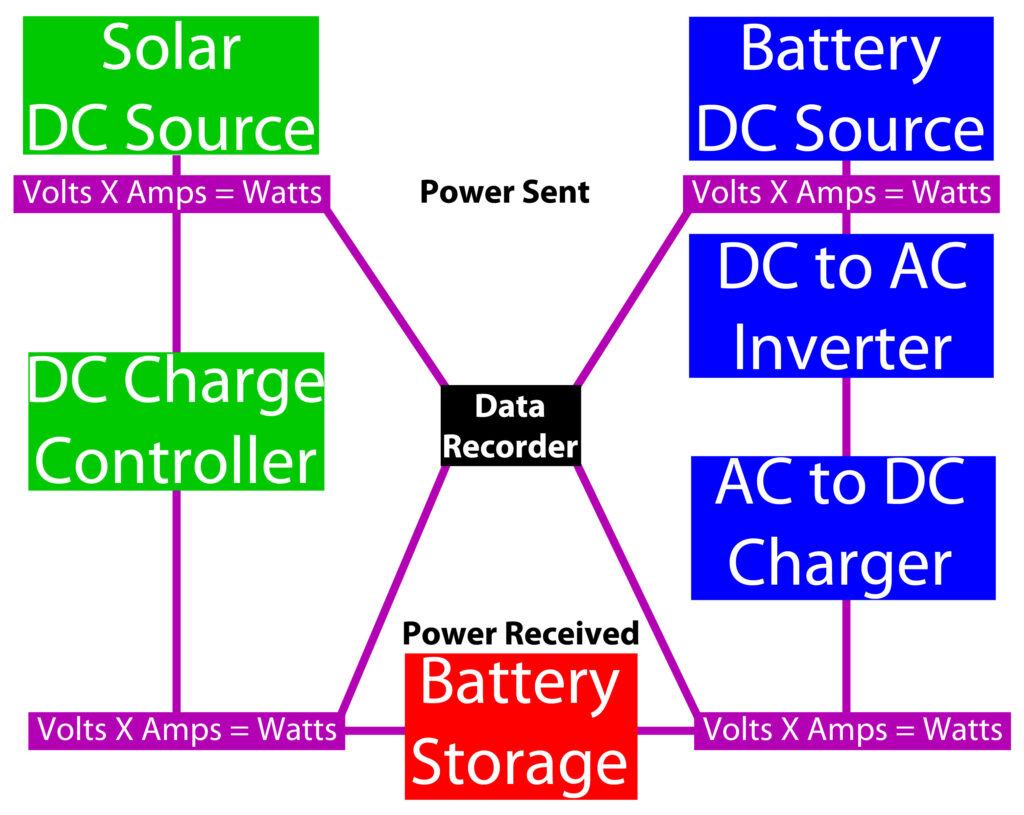
SPECIFICATION EXPECTATIONS AND VALIDATION
According to the original equipment manufacturer’s specification for the devices used, with the exception of the circuit related losses that are reasonably balanced for both test configurations, System 1 should expect a maximum of ~98% efficiency (minimum ~2% loss) and System 2 should expect a maximum of ~83% efficiency (minimum ~17% loss {94% of the power from the inverter derived from 88% of the power from the ~24VDC series batteries}).
According to the original equipment manufacturer’s specification for the devices used, with the exception of the circuit related losses that are reasonably balanced for both test configurations, System 1 should expect a maximum of ~98% efficiency (minimum ~2% loss) and System 2 should expect a maximum of ~83% efficiency (minimum ~17% loss {94% of the power from the inverter derived from 88% of the power from the ~24VDC series batteries}). Therefore, by design, a minimum of 15% additional loss should be observed under nominal operating conditions. Since System 1 source power was generated with PV modules, those modules were aligned facing the 180° azimuth (South) with approximately a 55° angle of elevation above the horizon to maximize power output at solar noon in Arizona. The component design of System 2 operated its inverter at its maximum capabilities when the charger was set to its maximum charging output. As such, the inverter would eventually enter its overheated protection condition in which it would automatically shutdown, cool to an appropriate operating level and return to normal operating mode. Additionally, on a few instances System 2’s source ~24VDC batteries were drained to levels that triggered the inverter’s low input voltage shutdown mode. When this occurred the source batteries were recharged to appropriate levels for continued testing. Finally, System 2’s charger was operated in maximum and low output modes to develop a spectrum of data representing various input/output levels for the system. As for System 1, its output was programmable allowing a multitude of test conditions ranging from matching System 2’s performance configuration to testing its performance efficiency from complete darkness generating zero power to maximum solar irradiation production.
Validation of the test system was completed on March 10, 2022. Data collection began on March 11th and continued through March 19th during solar hours. Additional collection was conducted on System 1 with a maximum output configuration to observe its full spectrum efficiency from complete darkness to the maximum irradiation of solar noon in lieu of configurations matching System 2 output. The following charts are representative of high and low power output operating modes of System 2 with System 1 configured to approximate the same charge current to the destination battery. These results remained consistent throughout the System 1 vs. System 2 contrast testing of March 11th through the 19th.
IV. RESULTS
COLLECTED DATA
With the percentage of power loss charted on the left Y axis, the input power charted on the right Y axis over the passage of time in the X axis, the following conclusions can be made for the “high power mode” (Fig. 2) and “low power mode” (Fig. 3) respectively:’
In high power mode
System 1
- input power between 265-270 watts (dark green line by right Y axis)
- conversion loss percentage 8-10% (light green line by left Y axis)
System 2
- input power between 305-315 watts (dark blue line by right Y axis)
- conversion loss percentage 38-41% (light blue line by left Y axis)
Differential
- System 2 incurred a minimum of 28% to a maximum of 33% additional loss of performance as a result of the extra conversion process (red line by left Y axis)
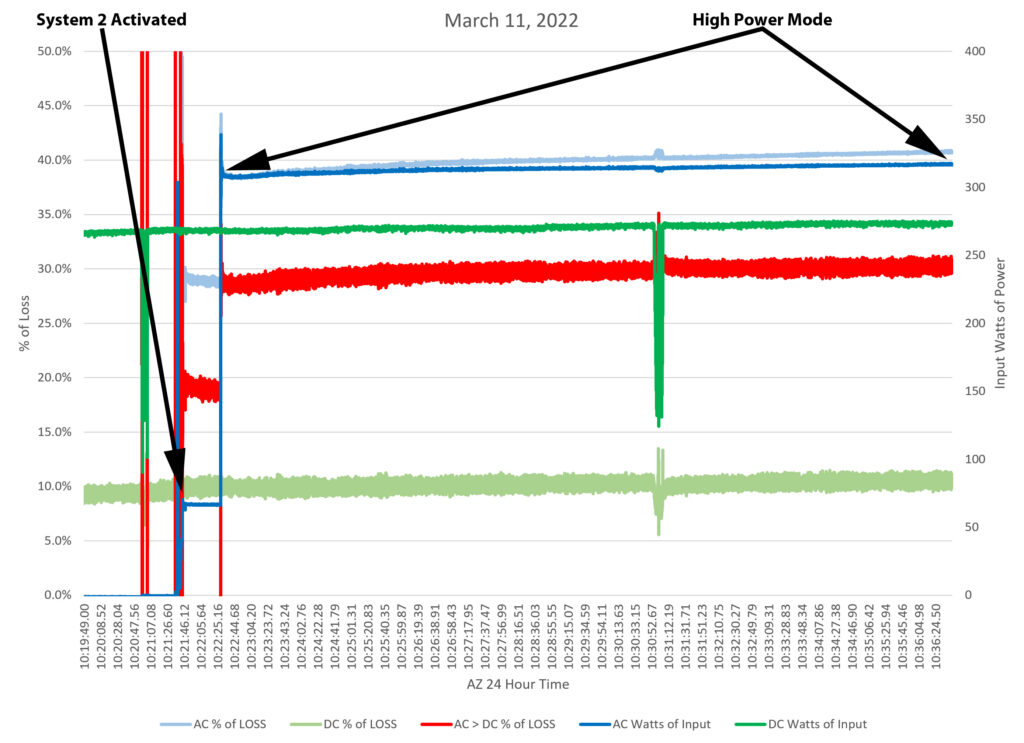
Fig. 2. 9am – 10:36:24pm power loss and input power in “high power” mode.
In low power mode
System 1
- input power between 140-145 watts (dark green line by right Y axis)
- conversion loss percentage 8-10% (light green line by left Y axis)
System 2
- input power between 65-70 watts (dark blue line by right Y axis)
- conversion loss percentage 28-31% (light blue line by left Y axis)
Differential
- System 2 incurred a minimum of 18% to a maximum of 23% additional loss of performance as a result of the extra conversion process (red line by left Y axis)
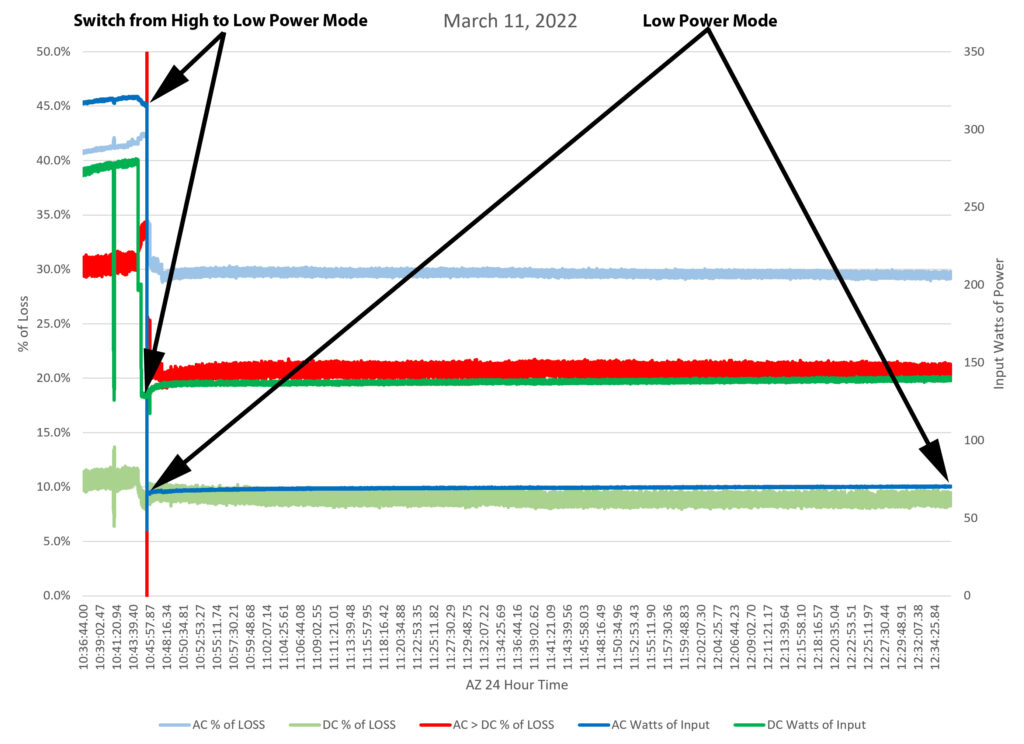
Fig. 3. 4pm – 12:36:44pm power loss and input power in “low power” mode.
System 1 from Zero to Maximum Power
Finally, System 1 was operated independently to observe its efficiency from zero to maximum power input as represented by the March 24th, 2022 charts below (Fig. 4-7 Quarters):
Sunrise Through 10:32:58 AM
10:32:58 AM Through Solar Noon
Solar Noon Through 2:32:58 PM
2:32:58 PM Through Sunset
INHERENTLY SUPERIOR DESIGN
The results provided demonstrate the designed for purpose performance of the solar charge controller, which confines its power efficiency losses between ~8-13% throughout its broad nominal operating range.
The results provided demonstrate the designed for purpose performance of the solar charge controller, which confines its power efficiency losses between ~8-13% throughout its broad nominal operating range. During the transition from dark to enough solar irradiation to generate ~25-30 watts of input power in the morning, the loss climbs as high as 42%, however, the duration of this inefficiency is very limited (~ 7 minutes in this instance). The behavior at sunset is consistent with this behavior in reverse. System 2, which utilizes an inverter to convert low voltage DC power to higher voltage AC power, demonstrates the difficulty in boosting voltage while converting it to AC incurs far greater losses than simply reducing and regulating a higher DC voltage to a lower voltage while controlling current to properly charge a connected battery as System 1 operates. Finally, System 2’s AC to DC battery charger is significantly more efficient than the inverter of its design, similarly to the solar charge controller of System 1, but it still has a greater loss of efficiency by comparison due to the extra conversion of AC to DC rather than simply stepping the voltage down and controlling the current to properly charge the destination battery. Subsequently, this research confirms that PV enjoys an inherently superior performance when charging batteries largely due to the elimination of current conversion and voltage boosting operations of AC delivery.
As it relates to PV power generation, it should be noted PV performance is highly dependent upon its operating location. These results collected in Arizona are indicative of and would be consistent with, the U.S. Sunbelt and may not hold true for systems operating in other environments. While the results identify an inherently superior performance advantage of a renewable energy, specifically PV charging batteries, there is a much greater context to understanding the current dichotomy in the propagation of these technologies throughout the U.S. Not within the scope of this investigation is the cost of a System 1 approach as compared to a System 2 approach. It stands to reason the reduced distribution and component design infrastructure of System 1 is likely less than a System 2 style deployment. Therefore, the likelihood that investment savings also exist for a System 1 approach may as well be significant. Focusing on an inclusive approach to improving the performance of renewables in their respective markets, this research identifies a framework to drive additional considerations from a different perspective - economics. Given the extensive environmental and incentive promotion as contrasted by market penetration in the U.S., hurdles clearly remain for these technologies and the probability economical performance is one of them is quite high.
The concept of evaluating the economical performance of renewable generation, distribution, and consumption is not new, but looking for the inherently superior opportunities to leverage their advantages might require renewed interest. Technology is and has been transforming life in the U.S. as well as around the world at an unfathomable pace, which sometimes leads to its own obsolescence just as rapidly. This may be applicable to current DC and AC grid designs. At the 1893 Chicago World’s Fair, Tesla won the world’s imagination when he illuminated the night with his AC electrical design of the Columbian Exposition ultimately winning the battle with Thomas Edison’s DC designs for the core construct of today’s electrical grid. At the time, the pursuit of AC systems was easily justified as it was far superior when it came to the biggest challenge of the era, scalable long distance transmission of significant power. Today, the playing field has changed dramatically with the advent of semiconductors which predominantly operate on DC power exclusively. EVs similarly work best utilizing DC power as do satellites, which operate in an environment where AC is difficult at best to generate or store. DC domains and the need to energize them economically are growing in kind creating opportunities for inherently superior deployments of genetically related DC energy applications like PV.
INHERENTLY SUPERIOR USER EXPERIENCE
Inherently superior applies to any context, which includes the user. In this context, the paradigm shift is directed toward adapting technology to its users rather than forcing the reverse.
Inherently superior applies to any context, which includes the user. In this context, the paradigm shift is directed toward adapting technology to its users rather than forcing the reverse. As it relates to the reasons given why consumers will not even consider purchasing an EV to replace their fossil fuel powered vehicle, “they’re too expensive, too short range, and too slow to charge”, suggests that in this context, EV’s are currently not inherently superior when it comes to economics and use. For most, utilizing a EV in this context would require they adapt to its capabilities. When it comes to EVs, consideration for its broader definition may lead to more inherently superior use cases. Beyond the origins of the concept in satellites, other vehicles have and continue to be electrically powered. There are a number of opportunities in this realm including locomotives and other pulling vehicles with predetermined routes and schedules, remotely operated apparatus (satellites, non-Terran machinery, devices operating in remote environments) with limited access to other energy sources, etc.
To illustrate the starting point of this shift in perspective, consider Amazon’s largest warehouse, “where you’ll find more robots than people”. The 10,000 robots, which outnumber the 1000 humans of the facility’s employment roster, put on “an electromechanical ballet” moving intricately through the facility and adjacent to one another dutifully maintaining the proper flow of inventory passing through the five-story plant encompassing the square area of 17 football fields hour after hour hardly making a sound. Facilities like these have prodigious battery charging systems and are therefore prime targets of opportunity for inherently superior PV battery charging deployments. Operations of this nature must locate where resources needed to fulfill their objectives are readily available, which includes electrical power. Utilizing PV could potentially enhance the profit equation by providing additional flexibility when selecting real estate for such an enterprise. These concepts demonstrate technology being deployed in a context where it naturally integrates with its user’s needs and expectations, which in turn, should improve acceptance and adoption.
V. CONCLUSION
As previously stated, conclusions of this exercise are intended to promote renewable energy technology propagation through unique or unleveraged opportunities that may be lost in the forest of the environmental and public policy promotions of the last two decades. By discovering, developing, and delivering unique inherently superior opportunities atypical of the industry that produce an increase in usability, performance, desirable economic outcome, and other advantages, the market share of the same would likely experience a significant increase since pursuing the same would not discourage those who are already committed to the benefits, namely environmental, currently promoted in the U.S. and abroad.
REFERENCES
[1] S. Denby, T. Purdy, A. Williard, J. Sherrington, G. Haerther, and S. Buckmaster, “The Electric Vehicle Charging Problem,” Youtube, 09-Feb-2021. [Online]. Available:
https://www.youtube.com/watch?reload=9&app=desktop&v=pLcqJ2DclEg&list=WL&index=32. [Accessed: 29-Apr-2022].
[2] “Electricity in the U.S. – U.S. Energy Information Administration (EIA),” Independent Statistics and Analysis – U.S. Energy Information Administration (EIA). [Online]. Available:
https://www.eia.gov/energyexplained/electricity/electricity-in-the-us.php. [Accessed: 29-Apr-2022].
[3] “Photovoltaics and electricity – U.S. Energy Information Administration (EIA),” Independent Statistics and Analysis – U.S. Energy Information Administration. [Online]. Available:
https://www.eia.gov/energyexplained/solar/photovoltaics-and-electricity.php [Accessed: 29-Apr-2022].
[4] “Electric vehicles and hybrids surpass 10% of U.S. light-duty vehicle sales,” Independent Statistics and Analysis – U.S. Energy Information Administration (EIA). [Online]. Available:
https://www.eia.gov/todayinenergy/detail.php?id=51218. [Accessed: 29-Apr-2022].
[5] Iea, “Policies to promote electric vehicle deployment – Global EV Outlook 2021 – Analysis,” IEA, 2021. [Online]. Available:
https://www.iea.org/reports/global-ev-outlook-2021/policies-to-promote-electric-vehicle-deployment. [Accessed: 29-Apr-2022].
[6] S. Gouchoe, V. Everette, and R. Haynes, “Case studies on the effectiveness of state financial incentives for Renewable Energy,” Subcontractor Report, Sep. 2002.
[7] F. Mormann, “Clean Energy Equity,” May 2019. Available:
https://scholarship.law.tamu.edu/cgi/viewcontent.cgi?article=2309&context=facscholar. [Accessed: 29-Apr-2022].
[8] S. Caldwell, “3.0 power,” NASA. [Online]. Available:
https://www.nasa.gov/smallsat-institute/sst-soa/power. [Accessed: 29-Apr-2022].
[9] J. N. DiStefano, “Inside Amazon’s largest warehouse – where you’ll find more robots than people,” https://www.inquirer.com, 19-Oct-2021. [Online]. Available:
https://www.inquirer.com/business/amazon-robots-delaware-largest-warehouse-fulfillment-20211017.html. [Accessed: 29-Apr-2022].
Fountain Hills High School AP Capstone Seminar, Fountain Hills, AZ
INTRODUCTION
The calls to boycott participation in the Olympic Games dwarf the five significant instances of the second half of the 19th century in which nations decided to refrain from participating due to political, social, or ethical concerns involving the host country.
The calls to boycott participation in the Olympic Games dwarf the five significant instances of the second half of the 19th century in which nations decided to refrain from participating due to political, social, or ethical concerns involving the host country. While the Olympic Games enjoys a history dating back some 3000 years, for the last century, every leap year signaled the anticipated return of its participants to celebrate humanity through competitive sporting events. The games of 1916, 1940, and 1944 were exceptions due to the World Wars of the time. The COVID-19 pandemic has caused a disruption of its own, delaying the Tokyo 2020 summer games until late July of 2021.
Consistent with the turmoil of the times, the pending 2022 Beijing winter games faces consternation over China’s repression and systematic abuses of Turkic Muslims (Uyghurs and ethnic Kazakhs) in northwest Xinjiang, the peoples of Tibet, the reversals of Hong Kong autonomy and its position on individual freedoms and abuses. Subsequently, there are calls for a boycott of the 2022 Beijing winter games in the name of effecting improvement of China’s human rights record. Julie H. Liu, member of the Northwestern University Journal of International Human Rights wrote in 2007 about the impending 2008 Beijing summer games, “As the world gathers in Beijing, China for the 2008 Olympic Games, it is a moment in history to expand upon the athletic achievements, patriotism, world peace, and collaboration that define the Olympic Movement. It is also an opportunity to utilize the Olympic bid, spirit and Movement as a tool for human rights reform” (para. 1). This paper will examine the effectiveness of Olympic boycotts as an instrument for human rights reform and what participation the United States (U.S.) should support at the Beijing 2022 winter games.
OLYMPIC BOYCOTT POLITICS
Over a decade has passed since Liu concluded, “Human rights reform initiated by the Olympic Games can first focus on violations directly related to the Games, such as labor rights, evictions or discrimination, but has the potential to motivate reform of international human rights concerns as broad as children’s rights or issues of international justice” (Liu, J., 2007, para. 44).
Over a decade has passed since Liu concluded, “Human rights reform initiated by the Olympic Games can first focus on violations directly related to the Games, such as labor rights, evictions or discrimination, but has the potential to motivate reform of international human rights concerns as broad as children’s rights or issues of international justice” (Liu, J., 2007, para. 44). As of December 2020 in Xiangtang Village of Beijing, Yang Yusheng, a professor at China University of Political Science and Law reported to the Hong Kong News (2020), “the authorities continued to use illegal means such as cutting off water, electricity and heating to force the village owners to relocate” (para. 2). The forcible nature of the evictions was evidenced by his personal hunger strike and a story of a mother and daughter who died from carbon monoxide poisoning because they attempted to keep warm by burning coal in the house. Governmental evictions should not be a life-threatening endeavor and this experience suggests reforms of this nature have not materialized.
Reviewing more serious human rights concerns, Abduweli Ayup, Uyghur writer, linguist, and activist told Chris Chappell during a March 2021 interview on the China Uncensored YouTube Channel, he was detained in a Chinese Communist Party concentration camp for over a year. When asked how he ended up in a concentration camp, Abduweli responded by stating it was because of the “Uyghur mother language kindergarten” (02:20). He continued, “When I was inside the concentration camp, first of all (silence) rape, it happened, and then torture: electric, electricize, electric with the electric stick, electricize it and indoctrination with propaganda against Uyghur culture, and against Uyghur identity and against human dignity” (03:25). He ends by claiming that this treatment is consistent with all Uyghurs in the camps. The claims of accounts like these and worse are extensive, providing a solid foundation to sustain a basis for concern and to conclude the pursuit of human rights reforms to date, have not initiated any notable improvement, to include the 2008 Beijing Olympics many hoped could fuel the flames of change.
If boycotts do not advance their objectives, are there other reasons to participate or not? The Olympics as an event, which requires some, but prefers a majority of international participation, is credited for focusing the ambitions of its participants and to a greater degree, the host nation, on positive concerns. President Theodore Roosevelt explained this concept in a letter to his children in October of 1903, “Did you ever read Pliny's letter to Trajan, in which he speaks of its being advisable to keep the Greeks absorbed in athletics, because it distracted their minds from all serious pursuits, including soldiering, and prevented their ever being dangerous to the Romans?” (para. 2). During a time when there was serious discrimination involving Jews and other minority groups, the 1936 Olympics did not stop Hitler from leading Germany to war. However, the gold medals won by Jesse Owens and John Woodruff did much to erode Hitler’s Aryan superiority claims throughout the world while seriously deflating their propaganda efforts. As stated by Howard Berkes (2008), a correspondent for the NPR Investigations Unit, “Signs banning Jews from public places had disappeared. Germans had been ordered to be nice to everyone, especially African-Americans. Black athletes took home stories about warmth and hospitality — in Germany, one athlete said, he didn't have to sit in the back of the bus” (para. 42). Hitler’s expectations of “dominating” the Olympics were quelled, and the event is now seen as an embarrassment to the dictator. On the other hand, John Tkacik, a former Senior Research Fellow at The Heritage Foundation, comments on this “failure” in 2007, saying that “The free European countries, as well as the United States, not only failed to use the 1936 Games as a bully pulpit from which to shame Germany's Nazi leaders; they actually downplayed German violence, threats, and excesses. A broad international boycott certainly would have been preferable to the fawning over Germany that took place” (para. 6). Though the games acted as a humiliation to Hitler, it did nothing to change minority oppression policies. In spite of that fact, he steadfastly believed something similar would occur at the 2008 games. Beijing’s hosting of the upcoming 2022 winter games is evolving into what could be a very parallel repeat of the Nazi experience, yet there is hope that China will enact similar policies and guidelines to foster a successful event from an international perspective.
INHERENT BENEFITS OF THE OLYMPICS
Beyond direct political concerns, indirect amelioration is being pursued. As a host nation per International Olympic Committee (IOC) guidelines, China is attempting to advance strategies for environmental sustainability.
Beyond direct political concerns, indirect amelioration is being pursued. As a host nation per International Olympic Committee (IOC) guidelines, China is attempting to advance strategies for environmental sustainability. For example, Peng Guo (2020), an author for the Journal of Coastal Research, exemplifies recent policies as follows: “The 1997 Sports and Environment Manual provides for environmental protection, pollution control, resource and cultural heritage protection in the areas of sports development. On that basis, the 1999 Agenda made a corresponding commitment, pointing out directions and objectives for sustainable development, clarifying the responsibilities of all parties involved, and providing policy guidance to Governments and management{...} The 2014 agenda expands the content of sustainable development to include internal and international cooperation within the IOC, the management of the Olympic legacy and internal regulations related to sustainable development” (p. 152). While it is premature to evaluate the impact and effectiveness of its efforts, China seems to be making environmental improvement advances. Environmentally friendly “green” games are a high priority for Beijing and Olympic stakeholders. In more recent years, Olympic.org, the official website of the Olympic games, commented on other measures being taken, such as “a management and monitoring system for the transplanted trees, and the organisers say that the survival rate of the transplanted trees is over 90 percent. Other measures include extensive topsoil stripping, preservation, and reuse programs for restoration purposes after the construction is complete” (para. 2). Indirect benefits, while laudable, are secondary to humanitarian reform. Subsequently, China’s environmental progress cannot be allowed to act as a smokescreen for their “oppressive” policies, the underlying principle of the proposed boycott.
As transformations occur, good or bad, for the peoples subjected to Chinese governance, the impact of activist participation on their societies since their acceptance to the world stage must be evaluated. Wariness about China’s intentions to evolve away from communism as a result of being welcomed to the international community has been and remains quite dubious. “President Ronald Reagan's recently published diary revealed his deep suspicions about a “China lobby” in his State Department that cared more about smooth relations with the Chinese Communists than about the legitimacy of America's commitment to human rights” (Tkacik, J., 2007, para. 10). Tkacik suggests U.S. credibility will suffer if it continues to prioritize relations with the Chinese Communist Party instead of improving our own human rights effort. So the question remains and continues to be, as an international event, does the Olympics present an opportunity to promote political reform? Nelson Mandela, a South African revolutionary against apartheid stongly supported this contention in a speech after assuming the leadership of his nation, “Sport has the power to change the world. It has the power to inspire. It has the power to unite people in a way that little else does. It speaks to youth in a language they understand. Sport can create hope, where once there was only despair. It is more powerful than governments in breaking down racial barriers. It laughs in the face of all types of discrimination” (Whitlock, J., 2020, para. 9). Mandela believed contests such as the Olympics had the capacity to bridge racial divides fostering an environment to eradicate racial animus and discrimination.
OLYMPIC POLITICAL CREDIBILITY & EFFECTIVENESS
Just as important as it is for those directly involved in the grand production of modern-day games, the success of an Olympic presentation depends upon the perception of the masses. For a nation making the sometimes difficult decision about participation, this ultimately weighs heavily on everyone’s mind. A diverse group of peoples by default have an expansive spectrum of opinions that differ significantly in this regard.
Just as important as it is for those directly involved in the grand production of modern-day games, the success of an Olympic presentation depends upon the perception of the masses. For a nation making the sometimes difficult decision about participation, this ultimately weighs heavily on everyone’s mind. A diverse group of peoples by default have an expansive spectrum of opinions that differ significantly in this regard. George Orwell noted this concern in “The Sporting Spirit” (1968) where he wrote, “But the significant thing is not the behavior of the players but the attitude of the spectators: and, behind the spectators, of the nations who work themselves into furies over these absurd contests, and seriously believe—at any rate for short periods—that running, jumping and kicking a ball are tests of national virtue” (p. 42). The problem with protests and/or boycotts by one or many is they attempt to cast or make judgments. To be effective, significant support must exist from others and those making the judgment must be reasonably free from hypocrisy regarding the same. U.S. civil rights and race relations of the era preceding the calls to boycott the 1936 Munich Olympics would have been absurd coming from anyone who did not denounce the American Immigration Act of 1924, the Jim Crow laws, and other civil rights inequities. After all, these policies inspired Hitler and the Nazi Party as they enacted the Nuremberg Laws. As Scott McLemee wrote about James Q. Whitman’s “Hitler’s American Model: the United States and the Making of Nazi Race Law”, “the Immigration Act of 1924 impressed Hitler as exemplary”, noting the following passage from Hitler’s political manifesto, “The racially pure and still unmixed German has risen to become master of the American continent,” he wrote in Mein Kampf, “and he will remain the master, as long as he does not fall victim to racial pollution” (para. 2). Today, U.S. protests about 1936 German policy would be credible as a result of the reforms that have been enacted to date.
While a U.S. Boycott of the Beijing 2022 Olympic Games has largely been ruled out, the debate is escalating. According to the Associate Press, “The United States accused China on Friday of committing ‘genocide and crimes against humanity’ against Uyghur Muslims and other minorities, and China accused the U.S. of discrimination, hatred “and even savage murder of people of African and Asian descent” (Lederer, Edith M., 2021, para. 1). This war of words occurred at the United Nations General Assembly’s commemoration of the International Day for the Elimination of Racial Discrimination establishing grey areas of credibility for those that would cast judgment on the other. Separating propaganda from reality to develop substantial international support by either side of this divide prior to the scheduled start of the Beijing 2022 Winter Games is unlikely. Subsequently, much like U.S. participation at the 1936 Munich Olympics, the U.S. should seek a similar outcome. Simultaneously, the U.S. has much work to do to unite our population so as to strengthen our voice for good. In Jason Whitlock’s eyes, the necessary first step is “returning American sports to what it has been in the past: a force for unity and a model of a diverse and colorblind meritocracy” (para. 26). Subsequently, where judgment is passed, scrutiny will follow so consider what you promote to be at least as important as what you protest.
REFERENCES
Berkes, H. (2008, June 7). Nazi Olympics tangled politics and sport. National Public Radio.
https://www.npr.org/templates/story/story.php?storyId=91246674
China Uncensored. (2021, March 24). Surviving a Uyghur concentration camp in China | Abduweli Ayup {Video}. YouTube. https://www.youtube.com/watch?v=hfkXSNo6jAg&feature=youtu.be
Guo, P. (2020). Sustainable development of the 2022 Beijing Winter Olympics Zhangjiakou Stadium under the concept of ocean ecological environment. Journal of Coastal Research, 104(sp1), 152–155. https://doi.org/10.2112/jcr-si104-028.1
International Olympics Committee. (2019, February 1). Beijing 2022 committed to hosting “green, inclusive, open and clean” Games. Olympic. https://www.olympic.org/news/beijing-2022-committed-to-hosting-green-inclusive-open-and-clean-games
Lederer, Edith M. (2021, March, 19) US and China clash at UN meeting on combatting racism. https://apnews.com/article/joe-biden-race-and-ethnicity-antony-blinken-discrimination-asia-372cd5274408905a2310ab5a352a0ea1
Liu, J. H. (2006). Lighting the torch of human rights: The Olympic Games as a vehicle for human rights reform. Nw. Univ. J. Int’l Hum. Rts., 5, 213. https://scholarlycommons.law.northwestern.edu/cgi/viewcontent.cgi?article=1053&context=njihr
McLemee, Scott (2017, March 8) Taking on the Alt-Reich. https://www.insidehighered.com/views/2017/03/08/review-james-q-whitman-hitlers-american-model-united-states-and-making-nazi-race
Orwell, G. (1968). The sporting spirit. The Collected Essays, Journalism, and Letters of George Orwell: Volume IV in Front of Your Nose 1945-1950.
Roosevelt, T. (1919). Theodore Roosevelt’s letters to his children: “Proper place for sports”. Bartleby. https://www.bartleby.com/53/29.html
Tkacik, J. (2007, August 22). Beijing Olympics boycott: A wake-up call. The Heritage Foundation. https://www.heritage.org/asia/report/beijing-olympics-boycott-wake-call
Whitlock, J. (2020, August 26). American sports are letting down America. Imprimis. https://imprimis.hillsdale.edu/american-sports-letting-america/
Yang, L., & Xu, H. (2014). Environmental concerns and policies in the Beijing Olympic Games. Proceedings of the 3rd International Conference on Science and Social Research, 1–7. https://doi.org/10.2991/icssr-14.2014.158
香港蘋果日報. (2020, December 16). 北京香堂村遭斷電 母女燒煤取暖險死. Apple Daily. https://hk.appledaily.com/china/20201217/EFLGRQKCCRCN5BF7JKFSR5SJIU/
Fountain Hills High School Science Fair, Fountain Hills, AZ

RESEARCH AND HYPOTHESIS
We believe the overwhelming proliferation of technology that surpasses the respective risk assessment and mitigation capabilities of its users will prove to discourage a majority from enhancing their communication privacy and security knowledge or behavior. Subsequently, this research project was developed to explore digital communications security and privacy awareness within a random group of respondents, to both validate our general hypothesis while simultaneously developing information that may be instructive for regulatory, educational and technology development policy.
With the ever prevalent and expanding reach of information technology networks, cyber security is exponentially becoming a concern for a similarly expanding user base. Starting in 1996 about 0.5% of the world population utilized the internet; as of June of 2019, that has risen to approximately 59% (Internet Growth Statistics, Nov. 2019). This enormous reach of interconnectivity that information technology delivers also exposes every user to a similarly increased risk of malicious victimization, which drives an ever growing effort to strengthen cyber security wherever possible in all sectors of society (National Cyber Strategy, Sep. 2018).
One such sector is social communications, which has and continues to experience rampant expansion and use (Wharton University, Jul. 2019). Subsequently, it has become a focal point of a variety of studies and concerns. The focal point of interest for this study is public awareness and concerns regarding social communication security. The aforementioned growth combined with the proliferation of mobile devices to more than 5 billion people (Pew Research Center, Feb. 2019) has presented a daunting challenge to social communication security concerns.
Information technology communications take many forms, however, its security is mostly protected by a cryptographic system, which facilitates encryption and decryption of data between any two points of its movement, meaning that said data can be “locked” or “scrambled” so only certain people can access it once it has reached its destination (e.g. VPN – Virtual Private Network; websites that begin with HTTPS – Hypertext Transfer Protocol Secure; etc.). Encryption generally involves creating a “secret key” known only to those intended to use the information and then employing this key to “scramble” the contents before transmitting it in a domain where its interception is a concern. An authorized recipient can “unscramble” the encrypted communication using the “secret key” in order to consume the communication in its original form (decrypted). During World War II, American Navajo Indians formed a specialized radio communications force, commonly referred to as “Code Talkers”. “Code Talkers”, in part, utilized their native language as a “secret key” to “scramble” radio communications between American forces in the Pacific theater preventing their undesirable interception by the enemy, the Japanese and their allies. American Comanche and Meskwakis Indians similarly aided in the European and African theaters respectively. These native languages were mostly unknown to the rest of the world and facilitated an extremely efficient and secure means to communicate in the battlefield.
In a digital technology context, points of movement could be from a storage component like random access memory, magnetic storage mediums and written documentation to intra-device communications like smart phones, computers, televisions, personal assistant devices, etc. At any point in time, data can be in an encrypted state (incomprehensible to anyone other than someone with the appropriate decryption components and knowledge or someone with components, knowledge, access and enough time to overcome the encryption algorithms utilized). Encryption methods and algorithms range from easily broken to unbreakable within the relevant life cycle of the protected data (MIT Technology Review, May 2019).
Proportional to information technology propagation and use, interest in the deployment of cryptographic systems has followed, albeit at a much slower pace. Subsequently, public awareness, concern and use of these security technologies do not keep an appropriate pace with the ongoing innovation. Knowing public appetite for the next new social service, application or device of the moment is overwhelming, will a random survey of individuals demonstrate that a majority will not express a desire to enhance their current social communication privacy and security knowledge or behavior even if the potential consequences of failing to do so are divulged in the process?
We believe the overwhelming proliferation of technology that surpasses the respective risk assessment and mitigation capabilities of its users will prove to discourage a majority from enhancing their communication privacy and security knowledge or behavior. Subsequently, this research project was developed to explore digital communications security and privacy awareness within a random group of respondents, to both validate our general hypothesis while simultaneously developing information that may be instructive for regulatory, educational and technology development policy. Due to the limited and uncontrolled means by which respondent participation will be solicited, the revelations of this survey will not be representative of any larger defined group of individuals within any reasonable margin of error, however, said revelations should provide guidance for additional research and efforts to address concerns highlighted by its results.
MATERIALS AND PROCEDURE
Materials list: computer(s), devices, software, communication services, assorted technologies, participation materials.
Procedure:
- Create survey propagation, response collection and reporting system utilizing a web server with WordPress and eForm software.
- Deploy scanning system computer with pfSense software to capture participant data streams for security analysis utilizing Wireshark software.
- Make survey participation promotion cards.
- Distribute and broadcast survey participation promotion materials and communications.
- Monitor and review survey response collection. Evaluate, document and report participant data stream analysis privately to participant.
- Analyze, contrast and record participant responses as a whole and by subcategorization.
GRAPHS
There were a total of 21 questions asked in the survey to provide a multidimensional analysis regarding the key question, “Do you expect to implement additional privacy and/or security precautions as a result of participating in this research?”
Web server analytics reasonably established all respondents completed their survey while in the greater Metro Phoenix area. This is consistent with the solicitation methods deployed to acquire survey respondents (personally delivered written or verbal invitations and any downstream propagation by those initially contacted). There were a total of 21 questions asked in the survey to provide a multidimensional analysis regarding the key question, “Do you expect to implement additional privacy and/or security precautions as a result of participating in this research?”. The following data points were contrasted against the key question: Age, gender, internet experience, daily use, encryption technology awareness, encryption technology use, pre-existing precautions deployed and a number of informative briefs about internet communications security and vulnerabilities. A total of 17 responses were recorded. The following table illustrates how each of the aforementioned data points related to the outcome of the key question:
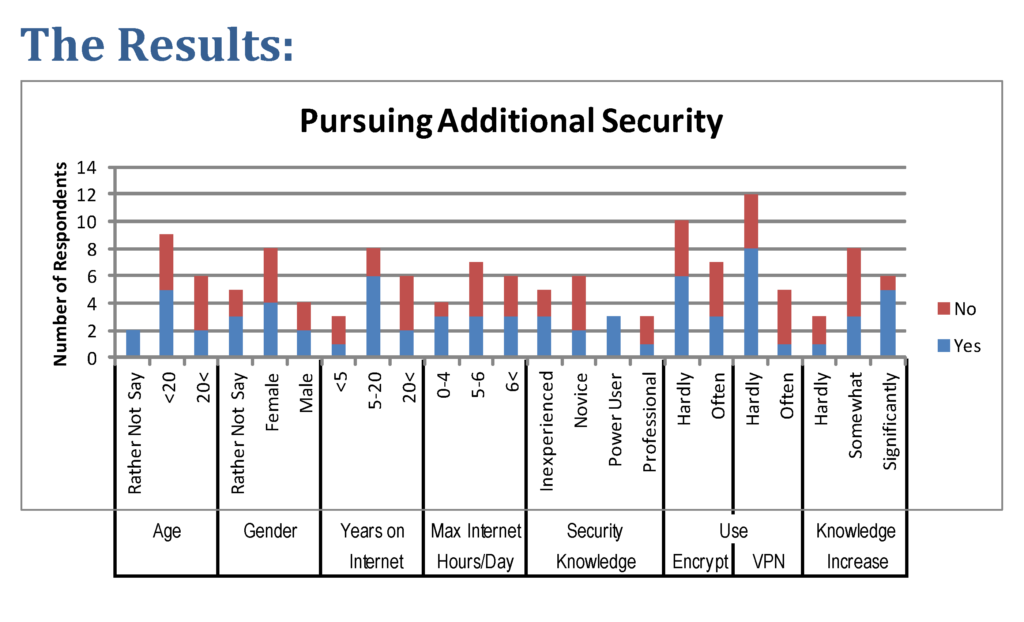
The age groups of the surveyors ranged from 13-60s with some electing not to say (RNS). Two primary age groups (Chart “Age”) emerged from the responses, 13-19 and 20-60s. Similarly, 8 identified their gender (Chart “Gender”) as female, 4 as male and 5 elected not to say (RNS).
As the type of devices utilizing internet communications have different security attack surfaces, developing an understanding of the context in which each response was submitted may provide a deeper insight into their revelations. Subsequently, a checklist of common use devices was presented in addition to “other” devices that could be offered by the respondent. 17 responses acknowledged using a smart phone, 8 used tablets or IPads, 14 used computers or laptops, and 1 submitted a “RaspberryPi3” as an additional device. Likewise, a checklist of common use applications was also presented with the ability to offer “other” choices resulting in the following number of respondents utilizing the respective applications: 3 used Ancestry, 16 email, 8 Facebook, 1 Flickr, 10 Instagram, 4 LinkedIn, 10 Pinterest, 4 Reddit, 9 Snapchat, 7 TikTok, 5 Twitter, 1 WhatsApp, 16 YouTube and 2 offered “other” choices.
Similarly, respondent internet, technology and security experience is rather diverse. Evaluating how many years each has utilized the internet for communications (Chart “Years on Internet”) in one form or another established the following primary groupings: 5 years or less, between 5 and 20 years and finally, more than 20 years. Just as important in framing the respondents hands-on practice level is determining the daily usage (Chart “Max Internet Hours/Day”) over the aforementioned time spans.
Next, it was important to focus on the key discipline of the research, security/privacy knowledge (Chart “Security Knowledge”) and use (Chart “Use” subdivided into “Encrypt” and “VPN” representing encryption and virtual private networking respectively). Based on the responses for each category, primary groupings were developed in order to provide a more generalized evaluation of the same.
To further establish a metric to evaluate each respondent’s command of the subject matter, a multiple choice question was asked about VPN (virtual private network) security value. The respondents were offered choices that established the following: 9 properly understood VPN security value; 3 improperly determined using a VPN provided no security value whatsoever; 3 improperly determined using a VPN provided complete security at all times; 2 did not know, understand the question, or elected not to provide a response. Since the key question inquires about “additional security” it was probative to detail the respondent’s pre-survey security baseline. The results of this input would subsequently be compared against an identical exit question to detail the extent to which “additional security” would be deployed providing a resolution to the key question beyond a binary “yes” or “no”. Prior to presenting the key exit question to the respondent, they were presented with options to view additional educational and background information regarding the core subject matter and current events regarding the same. This included VPN functionality, reliability of 3rd party VPN service providers, and mobile device vulnerabilities. Survey analytics tracked what topics of this information were accessed to provide a deeper understanding of each respondent’s results. After advancing beyond the informational presentation, the respondents described the level to which participating in the survey enhanced their knowledge regarding the subject matter: 3 stated their knowledge remained the same, 8 increased “somewhat”, and 6 increased “significantly”.
Finally, the key exit question was presented. If the respondent answered in the negative, the survey completed. If the respondent answered in the affirmative, a follow-up inquiry mirroring the aforementioned security baseline was presented to establish what changes the respondent was actually considering as a result of participating in the research project.
RESULTS
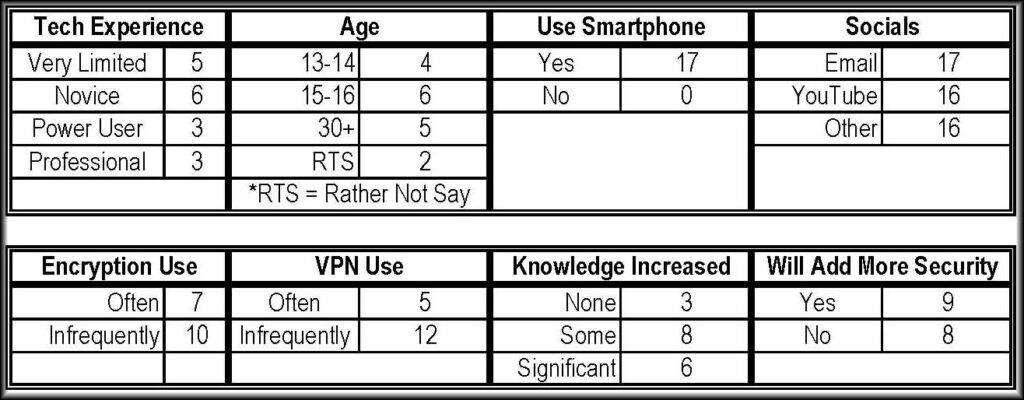
The “average” amount of “Tech Experience” means they know the basic idea of how each works and how to use them properly (e.g. password-protected Wi-Fi, reliable VPN providers, etc) compared to a Professional, who work[s]/[ed] with VPN or encryption as an occupation. Power User indicates they have worked with VPN a number of times, or know a significant amount of information about encryption.
ANALYSIS
While the extents of the responses do not establish a reasonable ability to develop a high degree of confidence regarding the repeatability of the results, they did in fact, underscore regulatory, educational, and technology development policy guidance. For virtually every metric contrasted against the key question the outcome was a slight majority favored increasing their privacy and/or security precautions. Given the projects intent to provide an educational outcome from its participants, digging deeper and looking at the multi-metric analytics paints a far more specific picture.
As predicted, the project did not collect a large enough data sample to establish conclusions within a reasonable margin of error. In spite of in-person verbal and written solicitations for participation, prospect follow through was rather low. Having the opportunity to provide equipment, time, and a location to complete a response when soliciting prospects in-person, would dramatically improve the conversion rate for completed responses. In the absence of the foregoing to enhance a more localized project, an internet marketing campaign designed to drive prospects to our survey website would likely yield a larger data set to provide a better margin of error for a broader project. Consideration would be required, however, as the broader respondent context would introduce many new variables that would have to be properly evaluated regarding their influence on the research conclusions. While the extents of the responses do not establish a reasonable ability to develop a high degree of confidence regarding the repeatability of the results, they did in fact, underscore regulatory, educational, and technology development policy guidance. For virtually every metric contrasted against the key question the outcome was a slight majority favored increasing their privacy and/or security precautions. Given the projects intent to provide an educational outcome from its participants, digging deeper and looking at the multi-metric analytics paints a far more specific picture.
As each respondent navigated the survey, the information they consumed provided a significant opportunity to expand their knowledge about internet communication privacy and security. Subsequently, it was quite likely that personal desire to use internet services and devices with little regard for personal privacy and/or security would be overcome through education. A detailed evaluation of every “No” result for the key question identified a specific profile for the respondent that underscores the likely reasoning behind the response.
Of the 8 “No” results, 3 out of 4 of the oldest respondents that all have in excess of 20 years internet experience averaging a maximum daily usage of about 7.3 hours, already implement significant privacy and security measures, in which they describe their knowledge as increased “somewhat” or “very little” as a result of participating in the survey. It comes as no surprise their response was “No”. The 4th respondent of this group only uses the internet for email, LinkedIn and YouTube, has a “Basic” understanding of the issue and regularly uses a VPN so it is likely they believe their exposure is satisfactorily limited.
The remaining 4 are younger respondents having an average of 6.8 years of internet experience. 1 of the 4 did not avail themselves to any of the education information provided, described their encryption and VPN knowledge as “Basic” and improperly believes their internet activities are always protected since they always use a VPN. The 2nd of the 4 describes their self as a “Technology Professional” that regularly uses encryption and did not view the educational information provided. The last 2 fit the profile of the hypothesis of this study. Both use social media services and applications important to their generation and describe their knowledge of internet privacy and security as a result of participating in the survey as “Significantly” or “Somewhat” increased, but in the end, plan on “full steam ahead” regardless of learning about icebergs in the water.
CONCLUSION
In the end, the outcome of this project validates the need to aggressively pursue internet privacy and security concerns on a multitude of fronts to prevent large scale undesirable impacts on societies that are, or becoming, so tightly integrated by the internet.
The outcome of this project established that a majority of the respondents decided to pursue additional internet privacy and security measures contrary to its hypothesis. As detailed in the analysis, a modified hypothesis would have been more appropriate. Specifically, for the younger, non-technology professional social media consumer, internet privacy and security concerns are secondary to use of the services provided. As hoped, the educational aspect of project participation by the respondents appears to have been well received and convincingly underscored the secondary focus of this research.
Due to the rapid augmentation of social communication systems, the quantity of internet users has been similarly impacted. However, awareness of internet safety is a major concern. This experiment substantiates concerns that have been raised by multiple studies to date and further suggests the need to expand upon internet safety education in middle and high schools. This does not suggest education for adults is not warranted as well, especially for the elderly and vulnerable as they are often targets of malicious internet actors. The survey included information about cryptographic systems and how to properly use them. With the ever-growing use of the internet, knowledge of cryptosystems is crucial in order for privacy to be ensured. Most who use such cryptographic systems, but don’t have the knowledge of a professional, may not realize encrypted data can be decrypted with proper knowledge, time, and resources.
VPNs are not a “one size fits all solution” either. Not all VPNs are the same, so it is important to know the difference when looking to obtain one. A VPN can be installed in “good faith”, and the user will be “thinking they’ve set in place an encryption process that will protect their data and online security” (Dinha, F., Oct. 2018). However, if it is from an unreliable provider, VPN users may still be exposing their private information to unscrupulous actors. Some VPN providers covertly or overtly collect and sell information their users expose while using their services. Governments often pose as VPN providers as a means of collecting information from a multitude of targets.
There are reputable VPN providers as well, however, they often fall victim to malicious actors who target them because they are a known entity that can be “staked out” by signing up as a user to collect information about the service to facilitate their breaching efforts. In recent years, NordVPN has admitted to a security breach in 2018 involving one of its data centers in Finland (Turton, W., Oct. 2019). The statement from advisory board member Tom Okman concluded that “the hackers only had access to a single “exit node”, the part of the service that masks its customers’ IP address”, and “no user credentials have been intercepted”. This is a situation everyone has to be wary about, and customers should execute due diligence when searching for a reliable provider.
All devices are susceptible to vulnerabilities regarding security. For example, “vulnerabilities were found in 38 percent of mobile applications for iOS and in 43 percent of Android applications” (Positive Technologies, June 2019). Mobile devices are not needed to access private information – hackers can use malware to access said device from any location. Another cause of vulnerability in security is a “weakness” in security appliances. Since these “weaknesses” are minor and can easily be missed, a considerable change must be made in the code in order to correct it. In the end, the outcome of this project validates the need to aggressively pursue internet privacy and security concerns on a multitude of fronts to prevent large scale undesirable impacts on societies that are, or becoming, so tightly integrated by the internet.
BIBLIOGRAPHY & APPENDIX
Internet World Stats, (Unknown). Internet Growth Statistics. Retrieved from:
https://www.internetworldstats.com/emarketing.htm
The White House (Sep. 2018). National Cyber Strategy of the United States of America. Retrieved from:
https://www.whitehouse.gov/wp-content/uploads/2018/09/National-Cyber-Strategy.pdf
Wharton University of Pennsylvania (Jul 26, 2019). The Impact of Social Media: Is it Irreplaceable? Retrieved from:
https://knowledge.wharton.upenn.edu/article/impact-of-social-media/
Silver, L. (Feb 5, 2019). Smartphone Ownership Is Growing Rapidly Around the World, but Not Always Equally. Pew Research Center. Retrieved from:
https://www.pewresearch.org/global/2019/02/05/smartphone-ownership-is-growing-rapidly-around-the-world-but-not-always-equally/
Dinha, F (Oct. 15, 2018). Council Post: Why The Wrong VPN Is More Dangerous Than No VPN. Forbes.com. Retrieved from:
https://www.forbes.com/sites/forbestechcouncil/2018/10/15/why-the-wrong-vpn-is-more-dangerous-than-no-vpn/#1d3f0b642e5f
Turton, W. (Oct. 21, 2019). After Twitter Allegations, Nord VPN Discloses 2018 Breach. Bloomberg. Retrieved from:
https://www.bloomberg.com/news/articles/2019-10-21/after-twitter-allegations-nord-vpn-discloses-2018-breach
Positive Technologies (June 19, 2019). Vulnerabilities and threats in mobile applications, 2019. Retrieved from:
https://www.ptsecurity.com/ww-en/analytics/mobile-application-security-threats-and-vulnerabilities-2019/
APPENDIX:
Survey used in experiment: https://open.transmittals.net/
***NO LONGER AVAILABLE***
Fountain Hills Middle School Research Challenge, Fountain Hills, AZ
INTRODUCTION
There are countless calls to action to mitigate climate change caused by human activities, but supporters of those calls must acknowledge any action that requires significant sacrifice must be justified and will be subjected to a level of scrutiny commensurate to the sacrifice.
There are countless calls to action to mitigate climate change caused by human activities, but supporters of those calls must acknowledge any action that requires significant sacrifice must be justified and will be subjected to a level of scrutiny commensurate to the sacrifice. Subsequently, any action that requires limited to non-existent sacrifice will enjoy limited to non-existent resistance and benefit from a stronger likelihood of broad acceptance and adoption. One of the actions promoted to mitigate climate change is the use of photovoltaic (PV) solar cells to generate electricity in lieu of using electricity from non-climate friendly sources. PV electricity currently supplies about 1.5% of the total power generated in the United States. The primary sacrifice metric for PV solar electricity and its ultimate success in climate mitigation is financial. If PV solar electricity results in higher overall costs for the same amount of power generated by its competing sources, the significance of the increase will fuel the degree of resistance to its use. If, however, the overall cost is the same or less, who wouldn’t prefer to purchase PV solar electricity that also mitigates climate change concerns?
MITIGATED PUBLIC DOMAIN PV PROJECTS
While everyone retains the right to their opinion about PV solar electricity and may pursue its use how they see fit within the rule of law for their personal domain, the public domain requires a level of consensus.
While everyone retains the right to their opinion about PV solar electricity and may pursue its use how they see fit within the rule of law for their personal domain, the public domain requires a level of consensus. This consensus is going to be directly related to the overall cost differential of PV solar electricity as compared to power delivered by local utilities. In addition to the existing desire to mitigate climate change, the budget impact of the 2008 recession and technological advancements of PV technology triggered a renewed interest in PV solar electricity, especially with local, state and federal entities. Consequently, some have engaged PV solar electricity with increased overall costs and have suffered both financially and politically while decreasing public trust in solar energy specifically and renewable energy generally. Some examples would include the City of Sedona, Arizona, which settled a lawsuit against its PV solar electricity provider, Sun Edison, which paid the City $375,000 to mitigate the increased costs resulting from their purchase of PV solar electricity under their contract in common. Likewise, Casa Grande Union High School District of Arizona also settled a dispute with their PV solar electricity provider, Constellation Solar, which paid the District a one-time payment of $250,000 and an ongoing annual payment of $50,000 for the remainder of their twenty year contract.
PUBLIC PV PROJECT ECONOMIC EVALUATION
While the preceding examples demonstrate a reduction of the overall increases of cost for their PV solar electricity, it is unlikely skepticism about the technology or confidence in the administrations of these entities has experienced the same degree of improvement.
While the preceding examples demonstrate a reduction of the overall increases of cost for their PV solar electricity, it is unlikely skepticism about the technology or confidence in the administrations of these entities has experienced the same degree of improvement. Reviewing PV solar electricity school district contract reports from the Arizona Auditor General paints a story consistent with the aforementioned entities for Gila Bend USD, Paradise Valley USD, Higley USD, Riverside ESD and others. Every time this story repeats itself, the barrier to its pursuit grows in contradiction to the intended goals of anthropogenic climate change extenuation. The problem was significant enough for the office to produce a “School District Alert” about “Solar Power System Contracts” in an effort to help those public entities who are not purchasing their PV solar electricity for the same or less overall cost as compared to their local utility and as a checklist of “Do’s and Don’ts” for those considering such pursuits. Four primary concerns are identified in the alert, 1) demand and transmission charges from the local utility, which PV electricity cannot offset; 2) overvaluation of PV electricity; 3) annual PV electricity cost escalation exceeding local utility rate inflation; 4) selling unused PV electricity to the local utility below its cost.
COMMERCIAL PV ECONOMICS
Because PV solar generated power is not available twenty-four hours per day, accounts utilizing PV electricity as an alternative must rely on firm power available from their local utility when the solar system cannot provide all the needed energy at any given moment.
Because PV solar generated power is not available twenty-four hours per day, accounts utilizing PV electricity as an alternative must rely on firm power available from their local utility when the solar system cannot provide all the needed energy at any given moment. As a result, the account must remain connected to its local utility to fulfill twenty-four hour power requirements. In Arizona, as is the case in most locations of North America, any account connected to the local utility will incur a level of minimum connection costs even if they do not use any power for the cycle. Obviously, nothing can reduce this cost. Secondly, “demand” fees, which represent an account’s share of infrastructure costs to operate the grid for their area, are generally immune to the influences of PV generation. This charge is based on the maximum demand of electricity during any one of the approximately 2,880 fifteen minute intervals of a billing cycle and represents about one-third of the total bill on average for public accounts. Once again, since PV solar generated power is only available during hours of solar insolation, it cannot influence any peak demand that occurs during non-solar hours. Lastly, even if the greatest peak demand occurs during solar hours, it is likely slightly smaller sized peaks occurred outside solar hours which limit cost savings of this metric to tenuous levels.
COMMERCIAL PV VALUATION
Overvaluation of PV electricity rose out of an inappropriate methodology and evaluation of the same.
Overvaluation of PV electricity rose out of an inappropriate methodology and evaluation of the same. The prevailing methodology consisted of adding all the local utility costs for an account targeted for use of PV electricity and dividing the amount by the total electricity as measured in kilowatt hours delivered in the same period. This resulted in a PV “blended” kilowatt hour value. The PV “blended” kilowatt hour value was then used for an equitable evaluation against the cost of electricity delivered by the competing local utility to determine the contract rate for the generation and delivery of PV energy. Because this methodology creates a “one to many” direct relationship between the PV kilowatt hour and local utility billing cycle, demand and kilowatt hour costs, it inappropriately establishes reductions in local utility billing cycle charges it cannot achieve and demand charges it’s highly unlikely to reduce. Since these charges represent about one third of the electricity charges for the average public utility account, using the “blended” kilowatt hour valuation results in a similar cost increase for the account.
COMMERCIAL PV COST ESCALATION
Annual PV electricity escalators have been promoted by solar developers and providers. Conceptually, escalators are intended to represent local utility rate inflation. When promoting a PV solar electricity contract, a vendor will sometimes request an annual PV kilowatt hour cost escalator be included in order to entice investors to finance the project.
Annual PV electricity escalators have been promoted by solar developers and providers. Conceptually, escalators are intended to represent local utility rate inflation. When promoting a PV solar electricity contract, a vendor will sometimes request an annual PV kilowatt hour cost escalator be included in order to entice investors to finance the project. According to the Arizona Auditor General’s “Solar Power System Contracts” alert, about half of PV solar contracts with schools included annual escalators. For contracts without escalators, this issue does not impact their bottom line. Do the escalators, which have ranged between 2 and 5 percent, actually compete with local utility rate inflation? When the Auditor General reviewed Gila Bend USD’s contract they found an escalator of 5% per year. This was based on a less than 6% average of a 6 year period of the local utility’s, Arizona Public Service (APS), rate inflation prior to executing a 20 year contract. Conceptually, the school district was expected to experience a slowing in the increases of its PV solar accounts over time. In reality, the Auditor General evaluated APS inflation for a 20 year period, which was equal to the contract term and found the average inflation to be slightly greater than 1% per year. In the end, the increased costs of Gila Bend USD’s electricity will continue to get worse every year until the contract comes to term.
MANDATED SALE OF UNUSED PV GENERATED POWER
Lastly, Arizona Corporation Commission law, rules and regulations create circumstances that require accounts to sell unused PV kilowatt hours back to their local utilities at slightly below wholesale rates, which are one sixth to one third the amounts paid to purchase the power from the PV solar provider.
Lastly, Arizona Corporation Commission law, rules and regulations create circumstances that require accounts to sell unused PV kilowatt hours back to their local utilities at slightly below wholesale rates, which are one sixth to one third the amounts paid to purchase the power from the PV solar provider. Every time this occurs, the respective PV solar contract’s cost differential with the local utility rate increases. This issue is exacerbated by oversized PV capacity. Since solar provider profits increase with increased PV generation, this has occurred all too often. For oversized PV systems, at a minimum the buy-back will occur once a year. For grossly oversized or improperly designed systems, this can occur continuously when the PV system is generating power.
PV ECONOMIC SUCCESS IS OBTAINABLE
Fortunately, these pitfalls are easily avoided with proper due diligence by qualified individuals, which ideally are directly and only responsible to the public entity.
Fortunately, these pitfalls are easily avoided with proper due diligence by qualified individuals, which ideally are directly and only responsible to the public entity. Actual cash flow, utility cost and any other analysis should be broken out by respective billing cycle, demand and kilowatt hour metrics to expose the proper valuation for the various aspects of PV solar contracts. Push for term set rate kilowatt hour contracts. If that’s not possible, utilize consumption profiles consistent with a targeted account to calculate average bills, again broken out by all individual metrics of a bill, for a period of 20 to 30 years earlier to provide a better gauge for inflation/escalation consideration. Next, evaluate the impact of unused PV kilowatt hour buy-back per the law, rules and regulations for your account to determine the optimal system sizing over time. Fully consider the account profile over the life cycle of a proposed PV investment. Occupancy, use and other issues may change an accounts profile so “what-if” scenarios should be considered and evaluated since PV installations are long-term considerations. Finally, since any PV installation is a long-term investment, consider different finance options like a “lease purchase”, which has a greater pay back if waiting is not an issue.
CONCLUSION
Earnest attention to detail will reveal the fitness for consideration of any public domain PV solar project.
Earnest attention to detail will reveal the fitness for consideration of any public domain PV solar project. For those that would increase the overall electricity costs as compared to their local utility, great care should be taken to ensure a substantial if not super majority of the public stakeholders believe the environmental benefits out-weigh the increased expense. This is likely a very difficult endeavor for most and should provide incentive to take more time to consider alternative configurations or ideas. But, for those PV projects that would provide the environmental benefits while simultaneously reducing overall electricity costs, it is a “win-win” outcome. While a project meeting this criteria is obviously a “win”, adding a successful result to, hopefully, a growing number of the same, will provide a much needed boost in public acceptance and adoption of the technology.
REFERENCES
“Casa Grande Solar Agenda.”
BoardDocs® PL, 3 Apr. 2018, sourced from:
https://www.boarddocs.com/az/cguhs/Board.nsf/goto?open&id=AWWK3F4FAFC3.
Davenport, Debra K. “Gila Bend USD Solar Report.” AZ Auditor General, Aug. 2011, sourced from:
https://www.azauditor.gov/sites/default/files/Gila_Bend_USD_Report.pdf#page=16.
“City, firm settle $375K lawsuit” Sedona Red Rock News, 1 Mar. 2019, sourced from:
https://www.redrocknews.com/news/88888896-city-news/55172-city-firm-settle-375k-lawsuit.
“School District Alert – Solar Power Contracts.” AZ Auditor General, July 2012, sourced from:
https://www.azauditor.gov/sites/default/files/SolarAlert.pdf.
Smathers, Heather. “CGUHSD to Get $250K Rebate on Solar Panels.” PinalCentral.com, 18 May 2018, sourced from:
https://www.pinalcentral.com/casa_grande_dispatch/area_news/cguhsd-to-get-k-rebate-on-solar-panels/article_d4993962-7a6f-5be6-a314-6e76ab880eab.html.
“U.S. Energy Information Administration – EIA – Independent Statistics and Analysis” eia.gov, 5 Mar. 2019, sourced from:
https://www.eia.gov/tools/faqs/faq.php?id=427&t=3.





